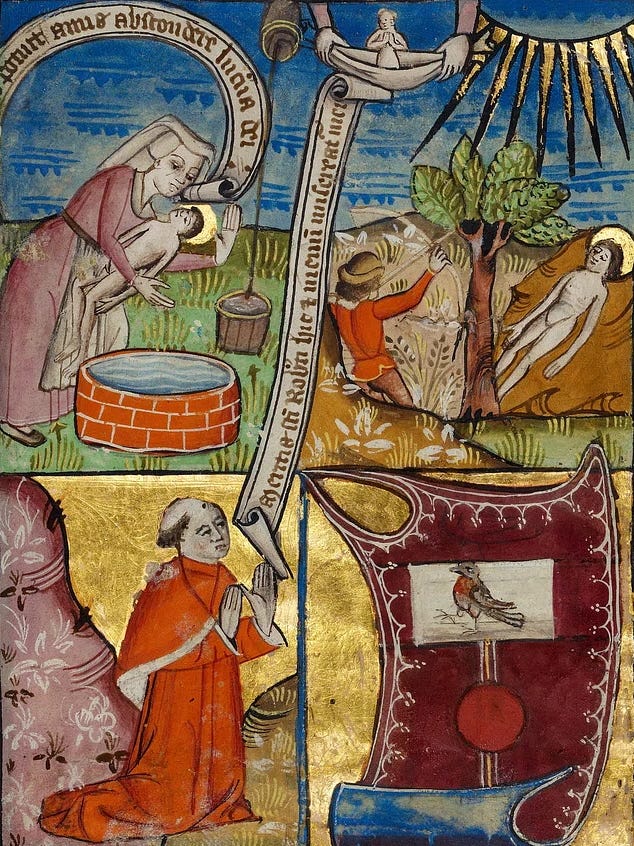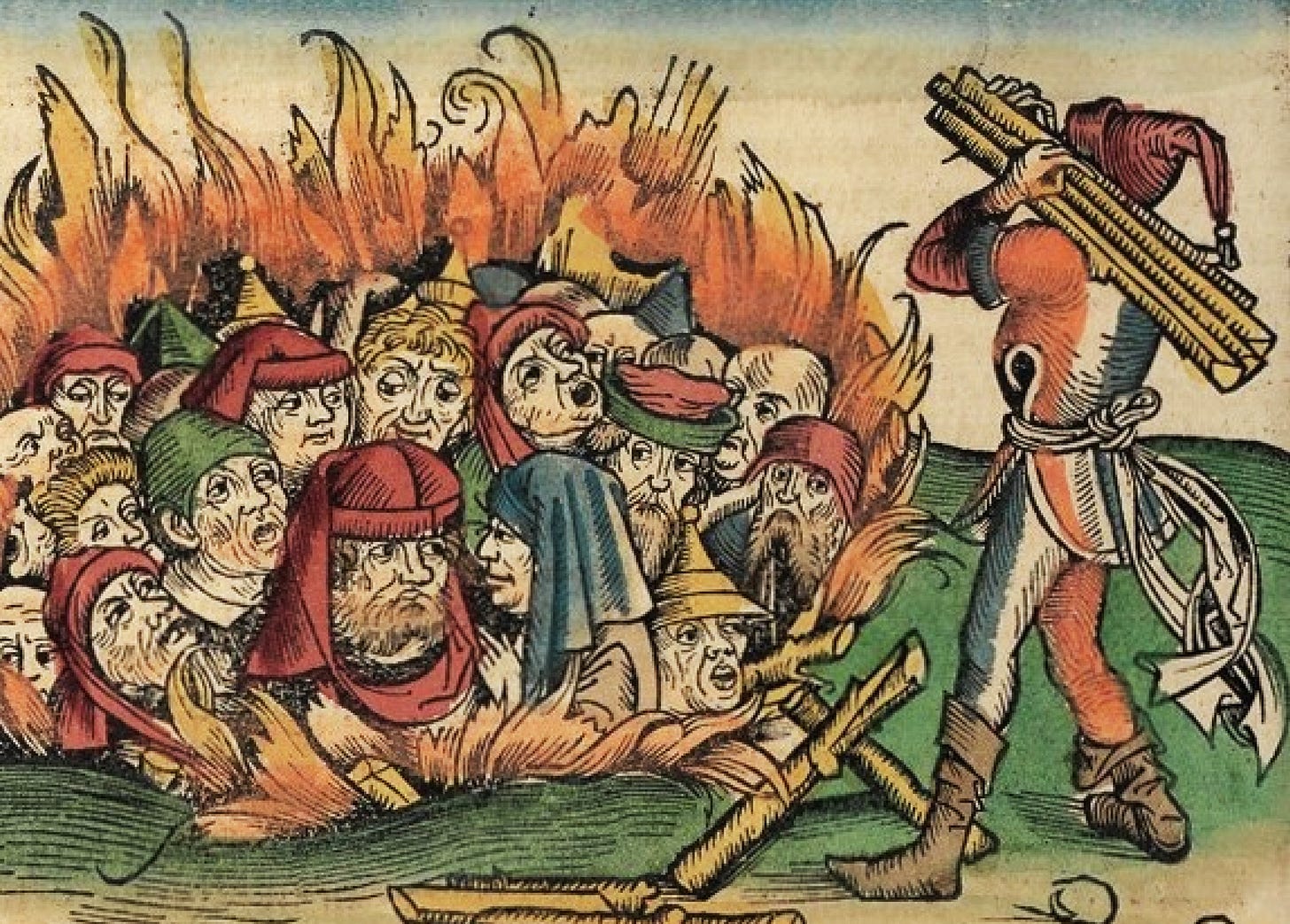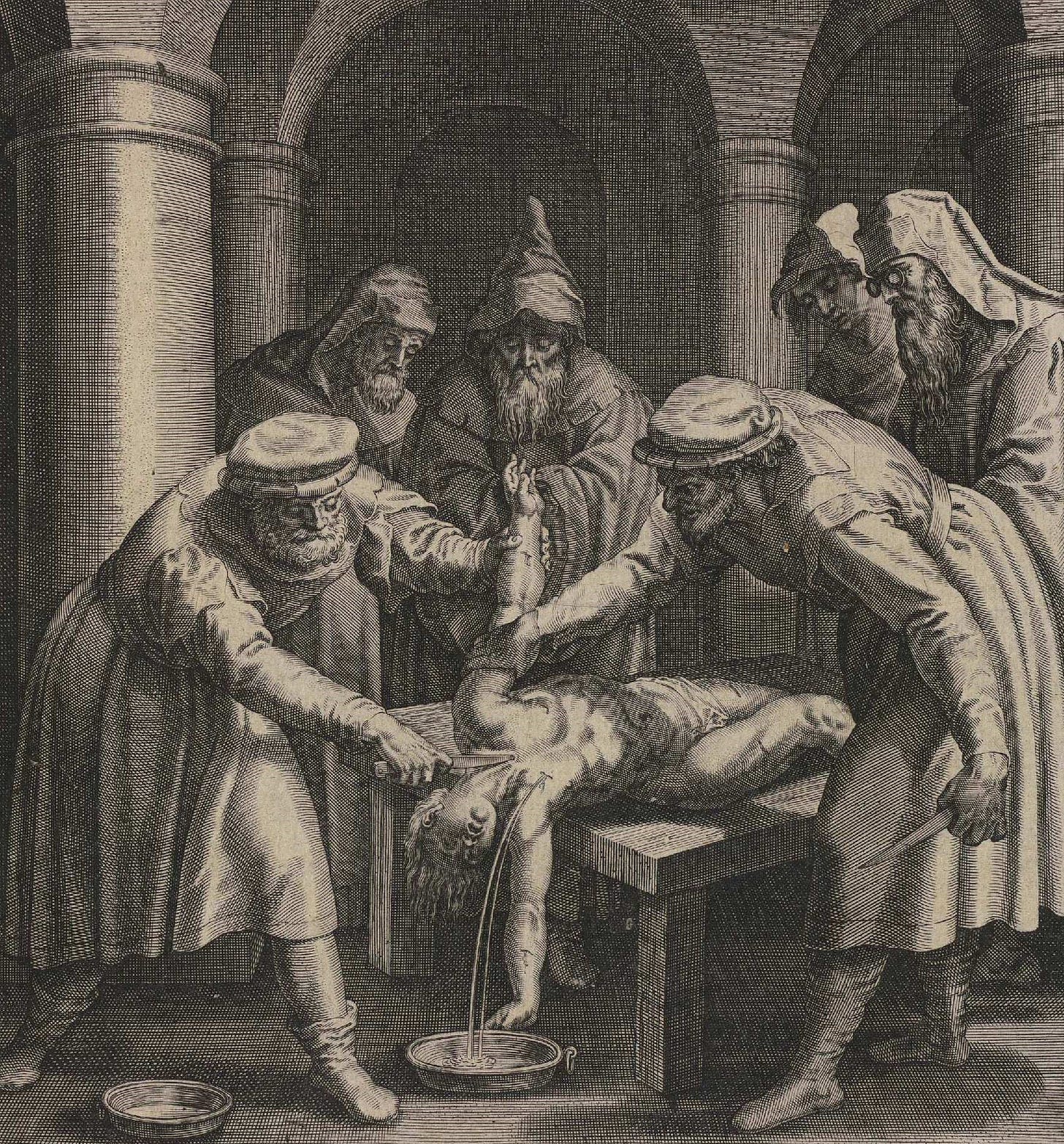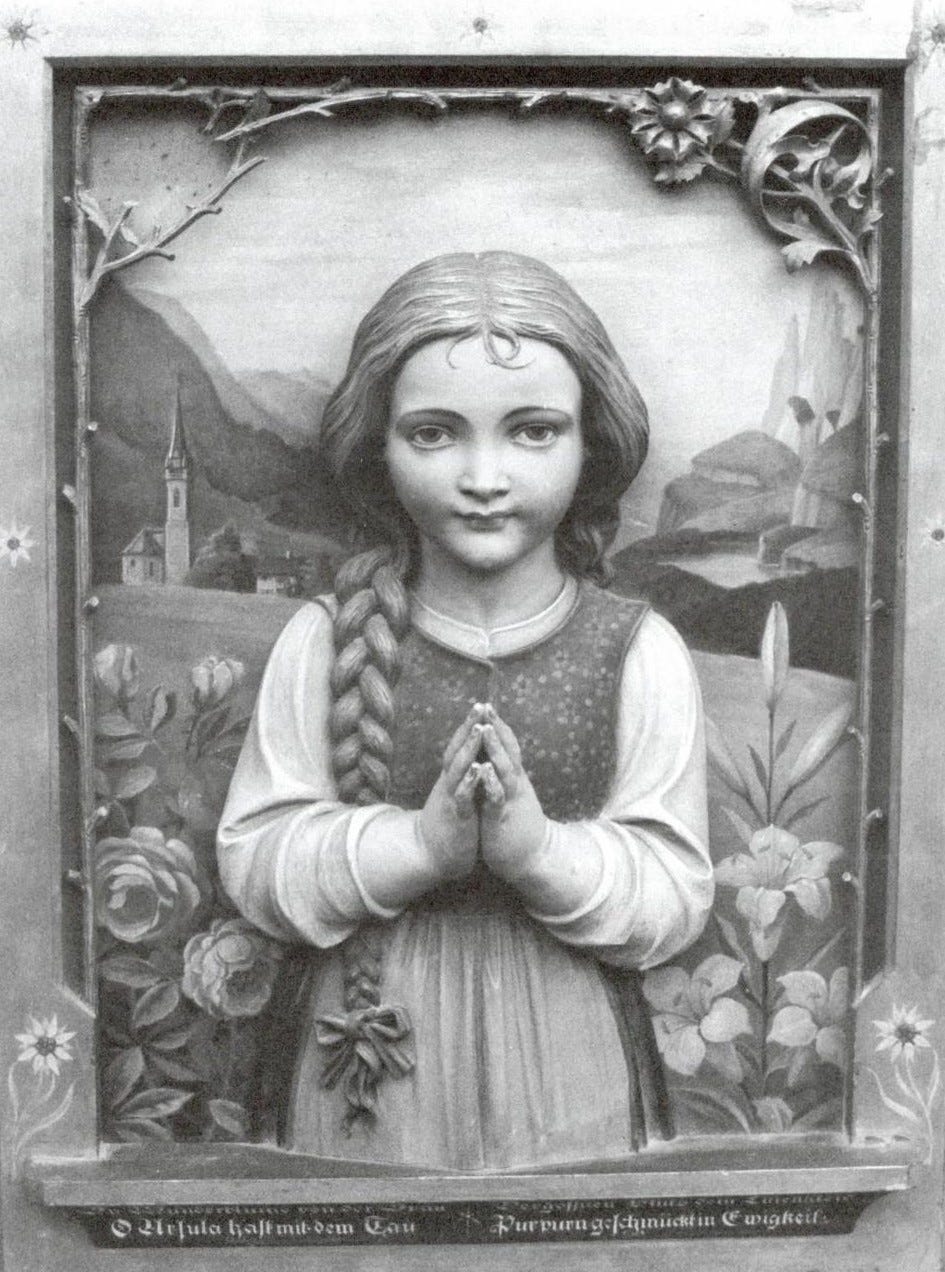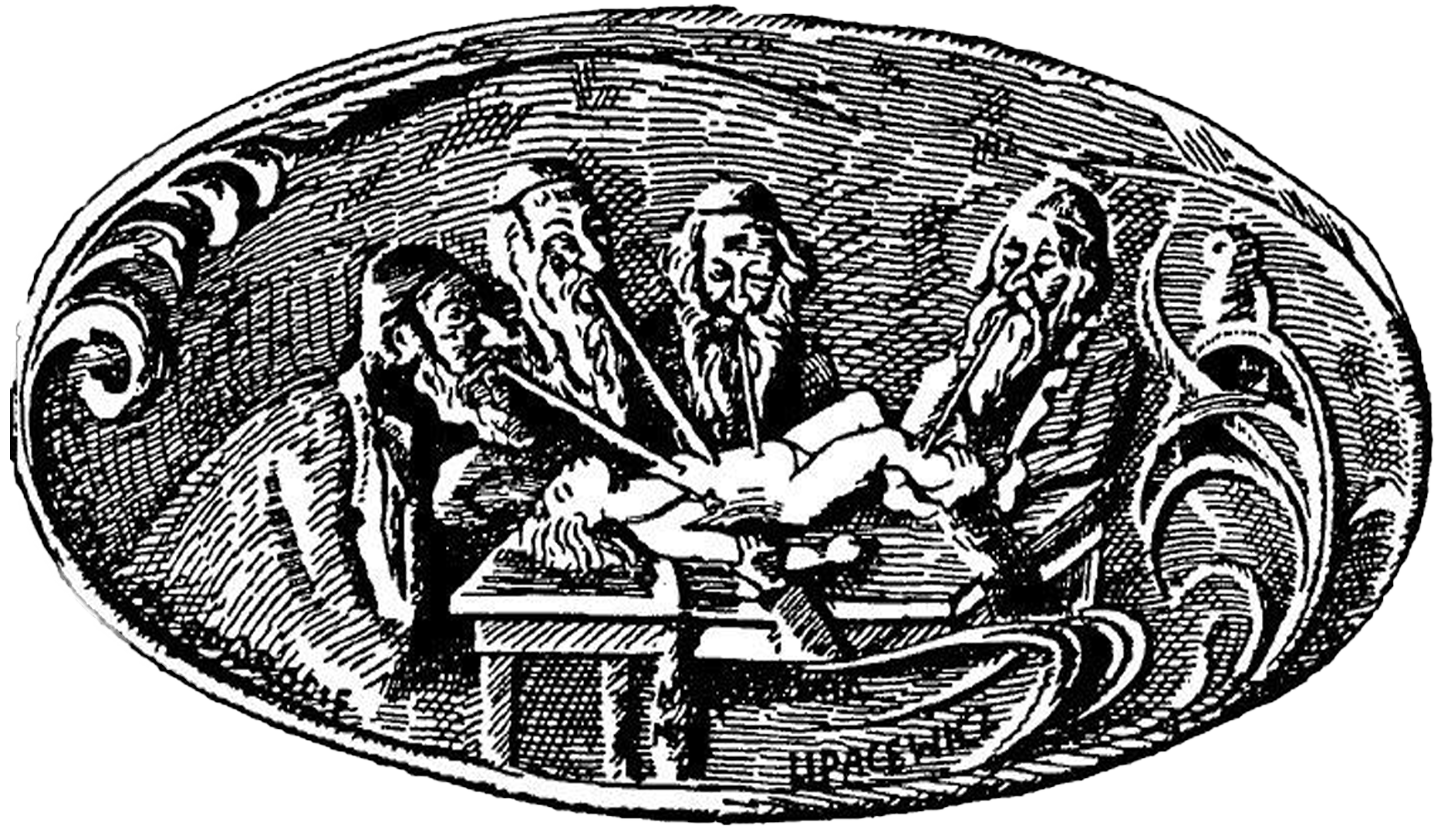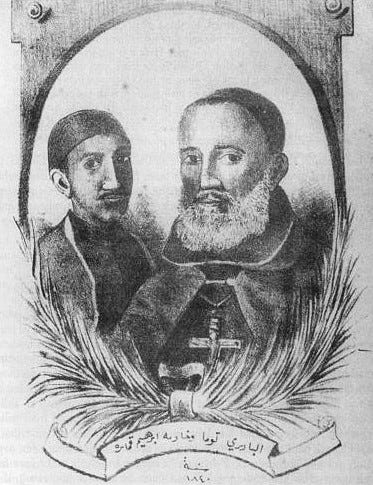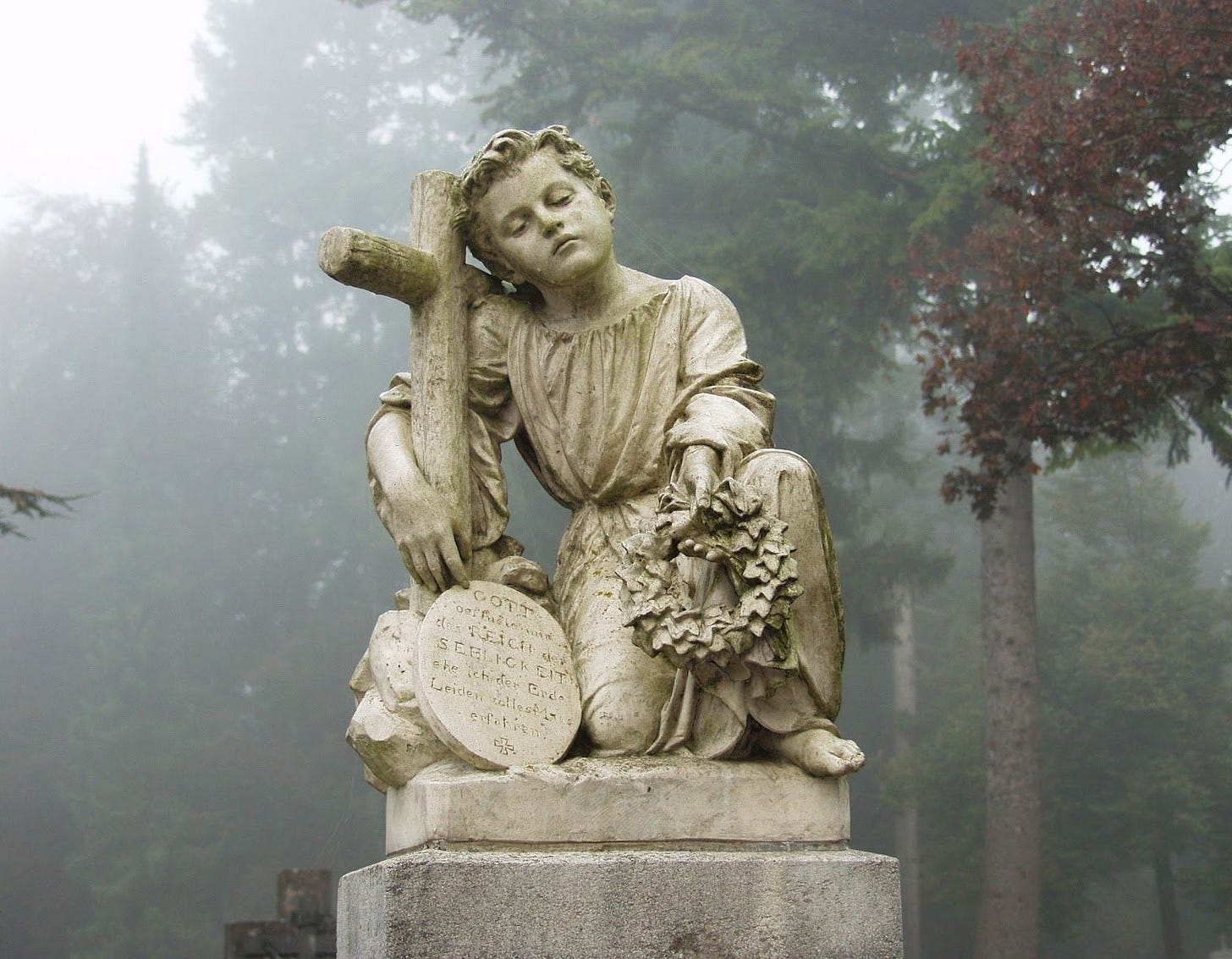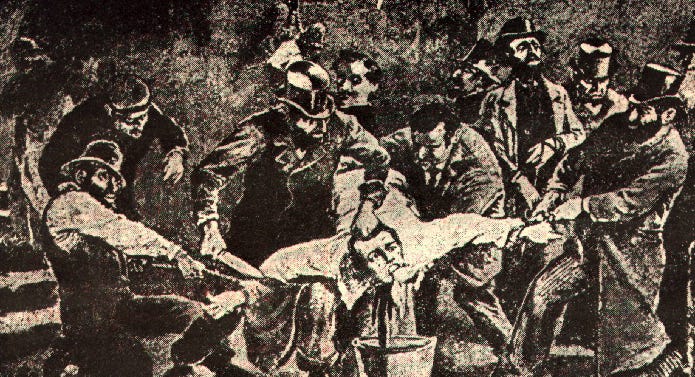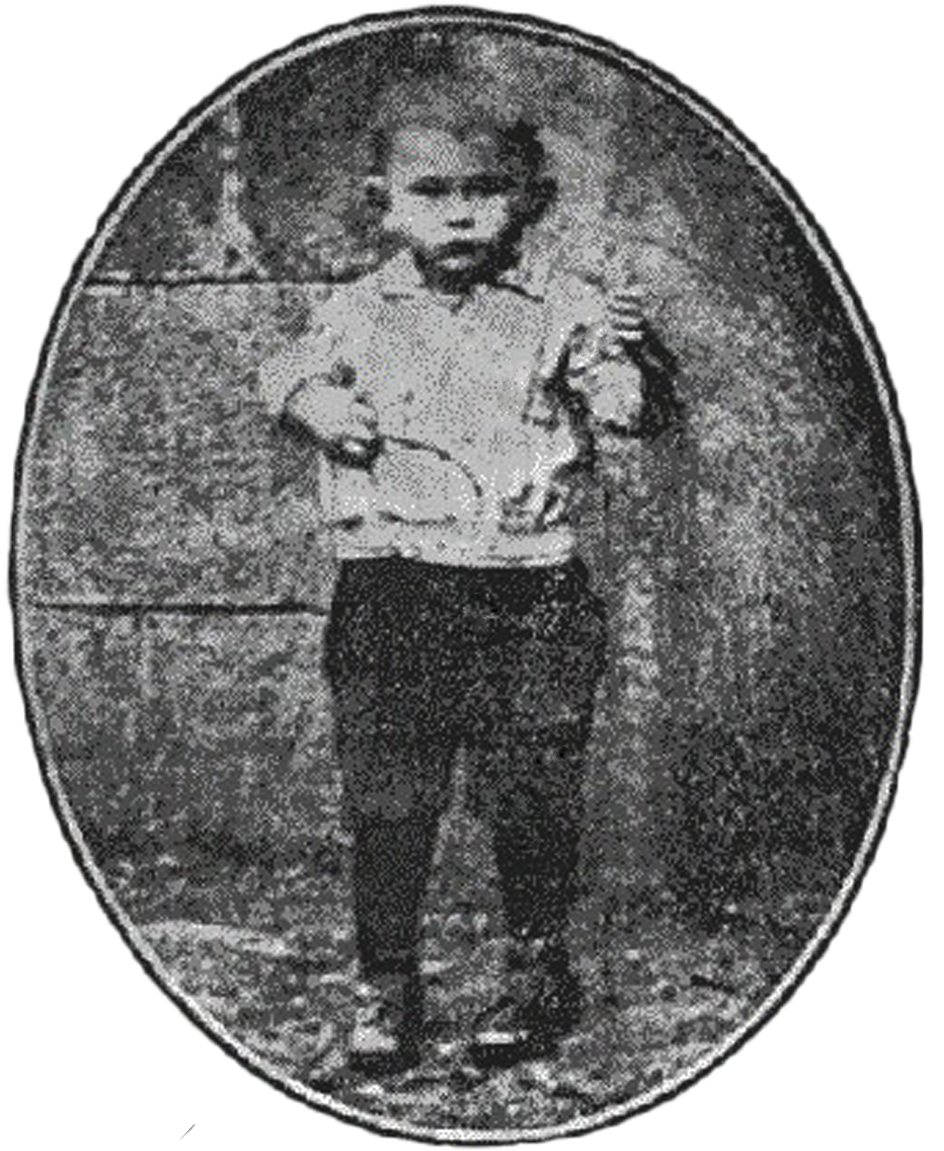Introduction
Jewish ritual murder, commonly referred to as the “blood libel”, is a historically persistent accusation that claims Jewish individuals engage in the ritualistic torture and murder of non-Jews (particularly children) for the purpose of extracting their blood, often alleged to occur during Jewish holidays such as Passover. According to Wikipedia and most modern historians, it’s simply a false antisemitic accusation. The countless cases throughout history have been supposedly fabricated by antisemites and have no basis in reality.
Another common belief among people is that the “blood libel” is simply a manifestation of medieval prejudice because the most infamous cases (Simon of Trent and William of Norwich) originate from that historical period. However, this accusation is, in fact, much older than the medieval era and has persisted for hundreds of years after the conclusion of that period, extending even into the last century. This article aims to explore the complete history of this accusation.
The Complete History (1st Century B.C. - 20th Century A.D.)
The first occurrence of blood libel in literature was in the book “On the Judeans” by Greek historian Damocritus who is believed to have lived in the first century B.C. Unfortunately, the original texts authored by Damocritus have been lost to history. However, a passage referencing this subject has been preserved in the Suda (a 10th-century Byzantine encyclopedia):
“Δαμόκριτος, ἱστορικός. Περὶ Ἰουδαίων· ἐν ᾧ φησιν, ὅτι χρυσῆν ὄνου κεφαλὴν προσεκύνουν καὶ κατὰ ἑπταετίαν ξένον ἀγρεύοντες προσέφερον καὶ κατὰ λεπτὰ τὰς σάρκας διέξαινον καὶ οὕτως ἀνῄρουν.”1
“Damocritus, historian. On the Judeans· In which he says that they were bowing down to the golden head of a donkey and that, hunting a foreigner (xenos) every seven years, they were making an offering of him, tearing his flesh into thin strips, and in this way killing him.”
Some of the earliest mentions of Jewish ritual murder are found in the works of two prominent intellectual figures from the first century B.C., Poseidonius and Apollonius Molon.2 These scholars served as sources for Apion, who recounted the remarkable story that when Antiochus Epiphanes entered the Jewish temple in Jerusalem in 169 B.C., he encountered a Greek captive who revealed that he was being prepared for sacrifice.3
The following passage is from the writings of the Hellenized Egyptian sophist and grammarian, Apion Pleistoneices:
“Antiochus found in the temple a table, on which a man was reclining [...] he stretched out his right hand and implored him to set him free. He said that he was a Greek and that, while traveling about the province for his livelihood, he was suddenly kidnapped by men of a foreign race and conveyed to the temple; there he was shut up and seen by nobody, but was fattened on feasts [...] He heard of the unutterable law of the Jews, for the sake of which he was being fed. The practice was repeated annually at a fixed season. They would kidnap a Greek foreigner, fatten him up and then convey him to a wood, where they slew him, sacrificed his body with their customary ritual, partook of his flesh, and, while immolating the Greek, swore an oath of hostility to the Greeks.”4
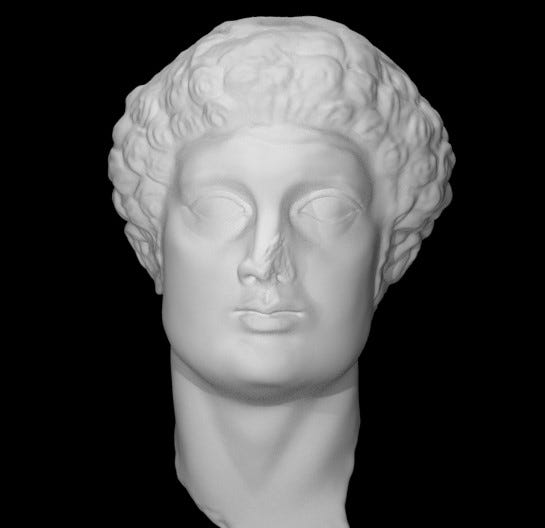
The quantity of reported incidents recorded in historical texts is extensive, making it impossible to cover every case within the scope of a single article. One compilation has documented 135 such incidents,5 while another source cites as many as 159.6 In the remainder of this article, I will present a selection of these cases, focusing specifically on those mentioned in multiple sources to ensure their historical validity.
1071 A.D. - During the celebration of Passover, a group of Jews residing in Blois, a town in France, carried out the ritual crucifixion of a Christian child. According to the accounts, after the child had died, they callously placed his body into a sack and, in an attempt to dispose of the evidence, cast the sack into the waters of the nearby Loire River.7 Upon learning of this heinous crime, Count Theobald decreed that those involved in the act be sentenced to death by burning.89
1144 A.D. - On March 20, a twelve-year-old boy named William disappeared. The last time William was seen alive by his family was on Holy Tuesday when he went into the house of a local Jew for work.10 His body was discovered days later in Thorpe Wood, near Norwich. Thomas of Monmouth, a monk who would later document the events, stated that the local Jewish community kidnapped William and murdered him in a ritualistic fashion.11 On Good Friday, William had been tortured, with his body pierced by sharp instruments, and was ultimately crucified in a manner resembling the Passion of Christ.12 William of Norwich was unofficially canonized by the local populace, and his tomb evolved into a significant pilgrimage site. Numerous reports of miracles associated with his shrine further reinforced his veneration as a martyr.13
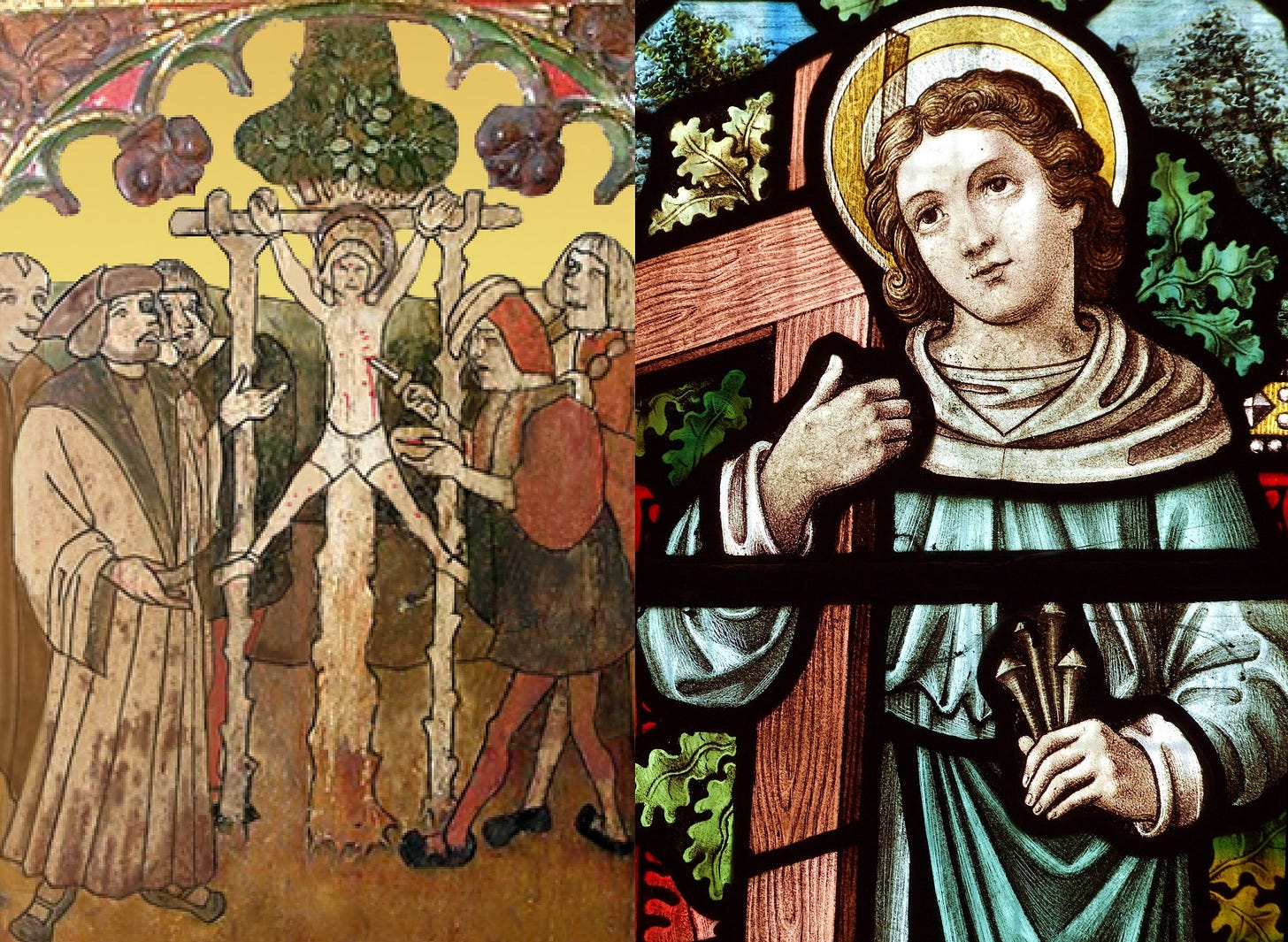
1168 A.D. - The body of a child martyr, identified as Harold of Gloucester, was discovered floating in a river.14 According to historian Anna Sapir Abulafia, local Benedictine monks stated that Harold had been abducted by members of the Jewish community on February 21st and subsequently tortured to death on the night of March 16th. The monks asserted that physical marks on the child's body indicated he had been forced to wear a crown of thorns and may have undergone some form of crucifixion.15 At the time of the incident, the Jewish community was reportedly gathered in Gloucester for a brit milah (circumcision ceremony). The chronicler of Saint Peter’s Monastery in Gloucester recounted the event, stating that the crime was in fact committed by Jews, who disposed of the body in the Severn River.16
1179 A.D. - On March 25th in Pontoise, France, within the cellar of the local castle, a twelve-year-old Christian child named Richard was subjected to brutal torture by members of the Jewish community.17 He was then affixed to a cross, where he was slowly bled to death amid the mocking cries of a frenzied Jewish crowd. Following his death, Richard's body was transported to the Church of the Holy Innocents in Paris, where it became the object of veneration as that of a martyr.18 French Renaissance humanist and philosopher Robert Gaguin, in his 1498 work titled “The Passion of Richard of Pontoise”, asserts that Richard's martyrdom persuaded King Philip Augustus to liberate France from the Jews and, in particular, from the oppressive claws of Jewish money lending.19
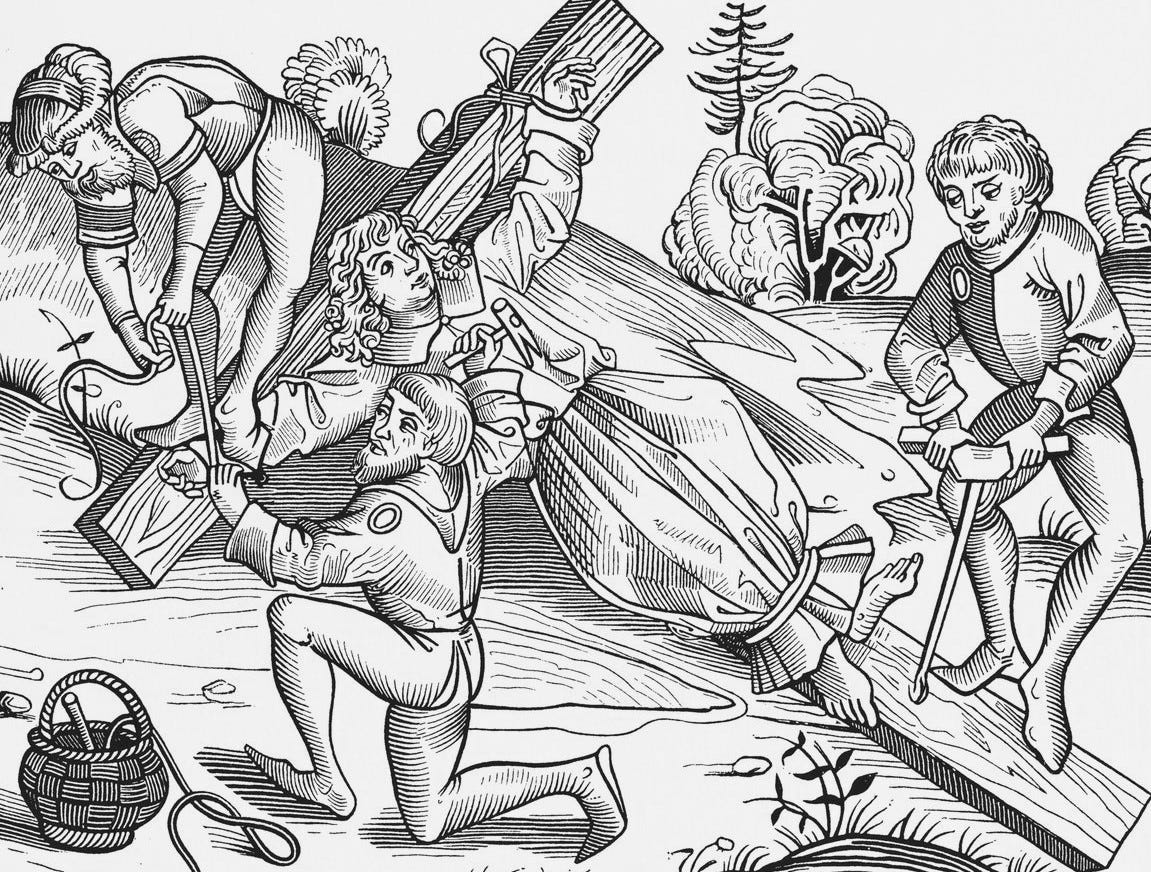
1181 A.D. - On Good Friday, in the town of Bury St Edmunds, Suffolk, the Jews murdered a child by the name of Robert. English monk and poet John Lydgate wrote a poem entitled “Prayer for St. Robert”,20 in which he states that Jews have kidnapped the child, tortured him, and then crucified him over Easter in a parody of Jesus's death. He is known as “Robert of Bury”. The hagiography of Robert was written but no copies have been found.21
1220 A.D. - On June 29, in Weissenburg, Alsace, a child named Heinrich was killed by members of the Jewish community. The child's blood was extracted through piercings and incisions as part of their ritual practices. The crime was uncovered by chance, resulting in the condemnation of 140 Jews, who were subsequently sentenced to death by burning.2223
1225 A.D. - In Munich, a woman, lured by the promise of Jewish gold, abducted a young child from her neighbor. The child was murdered by several members of the Jewish community, who drained the blood from the victim. After being apprehended during her second attempt at such a crime, the woman was handed over to the judicial authorities. As a result of this heinous act, a substantial number of individuals from the Jewish community involved in the crime were executed by burning.24
1235 A.D. - On Christmas Day, two Jews from Fulda ritually murdered five boys who were near a mill. The perpetrators collected the boys' blood in a pre-prepared pouch and set fire to the mill in an attempt to conceal their crime. The bodies of the deceased children were brought as corpora delicti to the Emperor Frederick II at the Reichspfalz, which incited widespread anger among the populace. However, the Emperor, responded dismissively, stating:
“Si mortui sunt, ite, sepelite eos, quia ad aliud non valent”25
“If they are dead, then go and bury them, for they are of no further use.”
Despite the Emperor's indifferent stance, the citizens of Fulda, supported by crusaders present in the city, took matters into their own hands, resulting in the killing of 32 Jewish men and women. After receiving a significant payment from the Jewish community,26 the Emperor appeared to be persuaded of their innocence. Following the Jewish community's acquittal, they were granted an imperial letter of protection that prohibited anyone from making further accusations against them.27 To “ascertain the truth”, individuals who had converted from Judaism to Christianity and were knowledgeable in Jewish law were summoned from various regions. These “experts” concluded that these accusations were false.28
1247 A.D. – In the small town of Valréas, on March 29, during Easter week, a two-year-old girl was subjected to severe mutilation and bloodletting after being nailed to a cross. As a result of swift actions, several Jews from the region were apprehended and subsequently convicted. When questioned, one of the accused, Burcellas, explained that the blood was intended for a ritual reminiscent of the ancient practice where the Kohen Gadol sprinkled the blood of a bull upon the altar. Another accused, Lucius, elaborated that if a child was obtained, the blood would be used in a form of ritual sacrifice, with a portion being sent to other Jewish communities. He also mentioned that the child was originally intended to be crucified on Good Friday, but circumstances forced them to act earlier, leading to the child’s death on the night of Wednesday.29 In contrast to some historical accounts, The Jewish Encyclopedia claims that members of the Jewish community confessed only after being tortured.30
1250 A.D. - In Saragossa, Spain, during Passover, a seven-year-old altar boy named Dominguito, was kidnapped and nailed to a wall by members of the Jewish community.31 The Jews of Saragossa had adopted the dogma that everyone who delivered a child for sacrifice would be freed from all taxes and debts. For this reason, Moses Albay-Huzet (also called Albajucetto) delivered the seven-year-old Dominguito del Val to the Jews for the ritual.32 His body was later found on the banks of the Ebro River.33 His remains were interred in the cathedral and are venerated as holy relics in the “Chapel of Santo Dominguito del Val”. Dominguito is honored as a saint, with his feast day celebrated on August 31 in the diocese of Saragossa.34
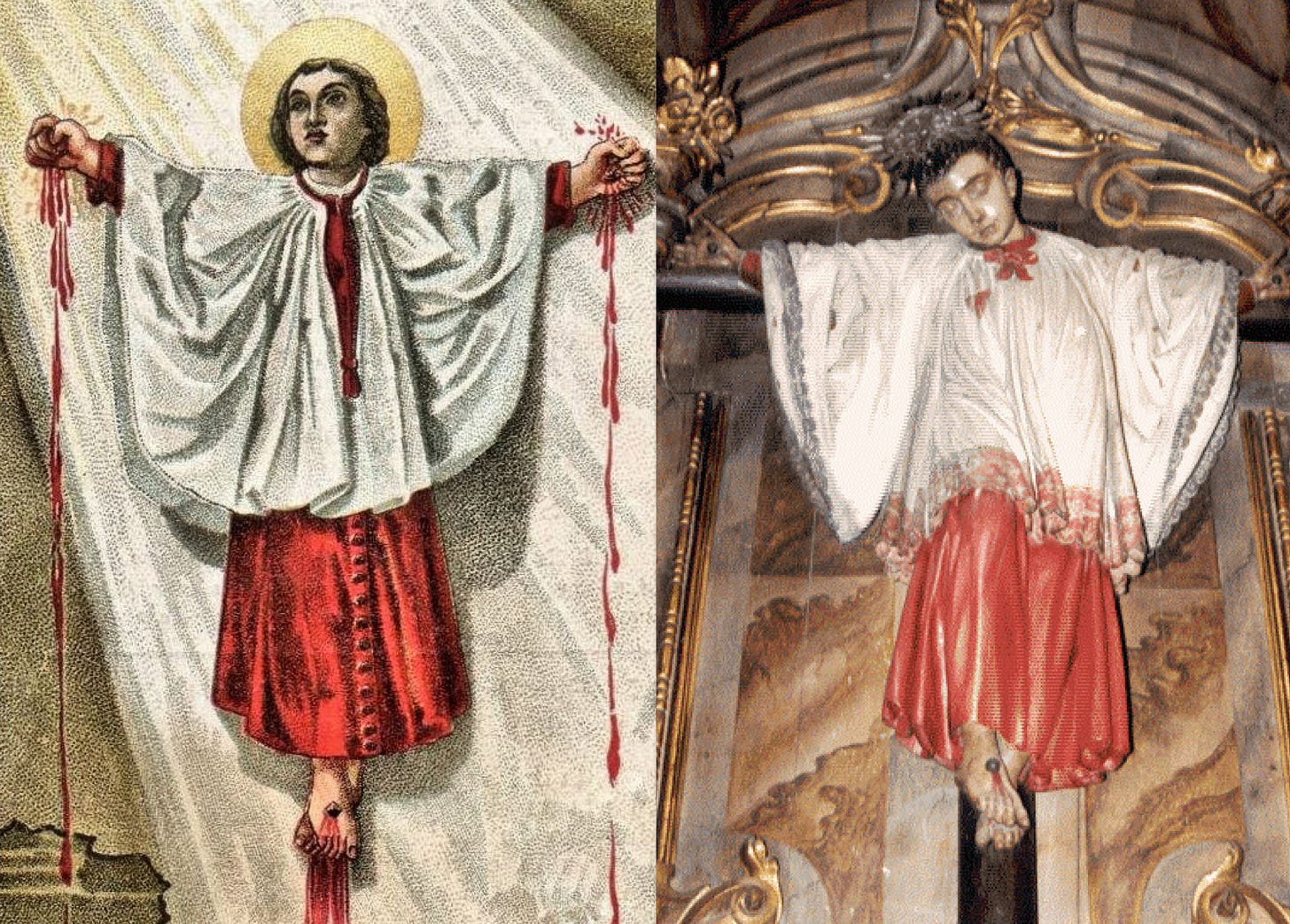
1255 A.D. - On July 27, in Lincoln, a group of Jews abducted an eight-year-old boy named Hugh. They held him captive in a hidden chamber and summoned Jews from across the country to participate in a sacrificial ritual intended to mock the crucifixion of Christ. Hugh's brutal torture, designed to mirror the suffering of Christ, ultimately led to his crucifixion and death. After his death, his body was disemboweled.3536 A Jewish man named Copin admitted involvement in the killing. A month after Copin's arrest and confession, King Henry III personally traveled to Lincoln. Upon his arrival, he ordered the execution of Copin and eighteen other Jews.37 Miracles were attributed to Hugh, he was locally revered as “Little Saint Hugh” and his feast day was informally set for July 27, but he was never officially canonized.38 A shrine was created after the expulsion of the Jews from England in 1290, partly funded by Edward I.39 A ballad was composed in his memory, the traditional British folk song “Sir Hugh” (Child Ballad No.155, Roud No.73), also called “The Jew's Garden”.40
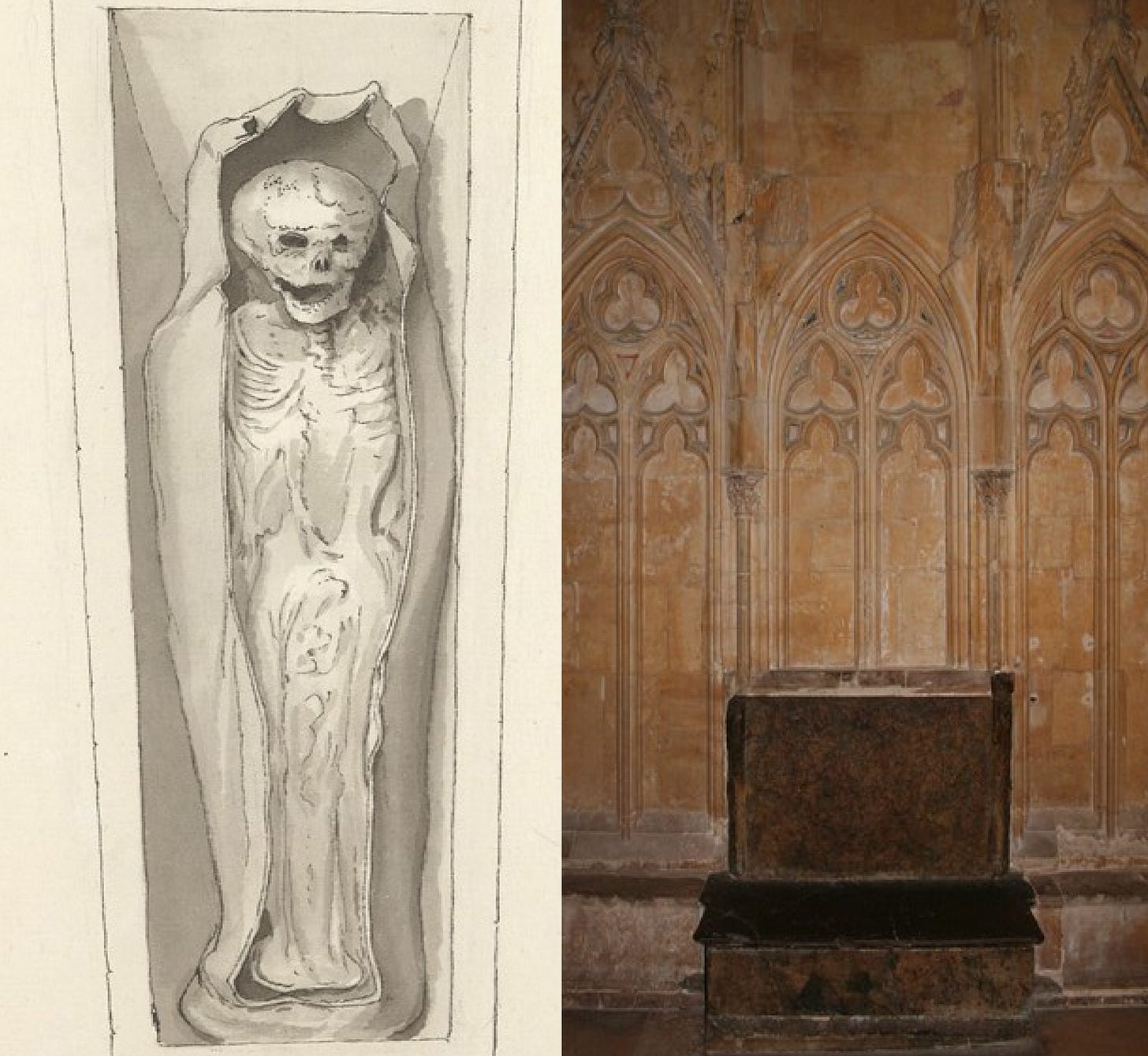
1267 A.D. - In the town of Pforzheim, located in Baden, a seven-year-old girl named Margaretha was subjected to a horrific ordeal by members of the local Jewish community. Her body was wounded at every joint, and her blood was then extracted and carefully collected. After the atrocity, her body was weighed down with stones and cast into a nearby river.41 A few days later, the child’s remains were discovered by fishermen who noticed a hand protruding from the water. Those Jews found guilty of the crime were sentenced to be broken on the wheel and then hanged. Two of the accused reportedly strangled each other to avoid facing the punishment.42 Margaretha's mutilated body was later buried in a stone casket within the castle church at Pforzheim. The grave was opened in 1507 in the presence of Cardinal Bernhard, and the corpse was found to be remarkably well-preserved. The gravestone, which remains in the castle church at Pforzheim, explicitly records that the child was killed by Jews, providing the exact date of the event.4344
1287 A.D. - In April, in the city of Oberwesel, a young boy named Werner endured prolonged and brutal torture, ultimately leading to his death from excessive blood loss.45 Werner, a 14-year-old laborer, was lured by Jews under the pretext of having him clean a cellar. Werner was dragged into the cellar, where he was gagged and bound head-down to a wooden frame. His captors proceeded to lash him, opened his veins with his own knife, and drained his blood, leaving him hanging until it was fully extracted.46 The judge of Oberwesel was reportedly bribed, allowing the perpetrators, including their Rabbi, to escape justice, which incited widespread unrest and led to the persecution of Jewish communities in Oberwesel.
Emperor Rudolf I von Habsburg ordered Archbishop Heinrich of Mainz to deliver a sermon stating that Christians had wronged the Jews and that Werner’s body should be burned, with the ashes scattered.47 During the Archbishop's sermon, over 500 armed Jews were present to silence any Christian objections.48 This event inspired the construction of the “St. Werner's Chapel” as a memorial. Although royal orders mandated the burning of Werner's body to prevent veneration, he was instead buried on April 30, 1287. Reports of alleged miracles soon followed, and known as “Werner of Oberwesel,” he was venerated in the Diocese of Trier until 1963.49
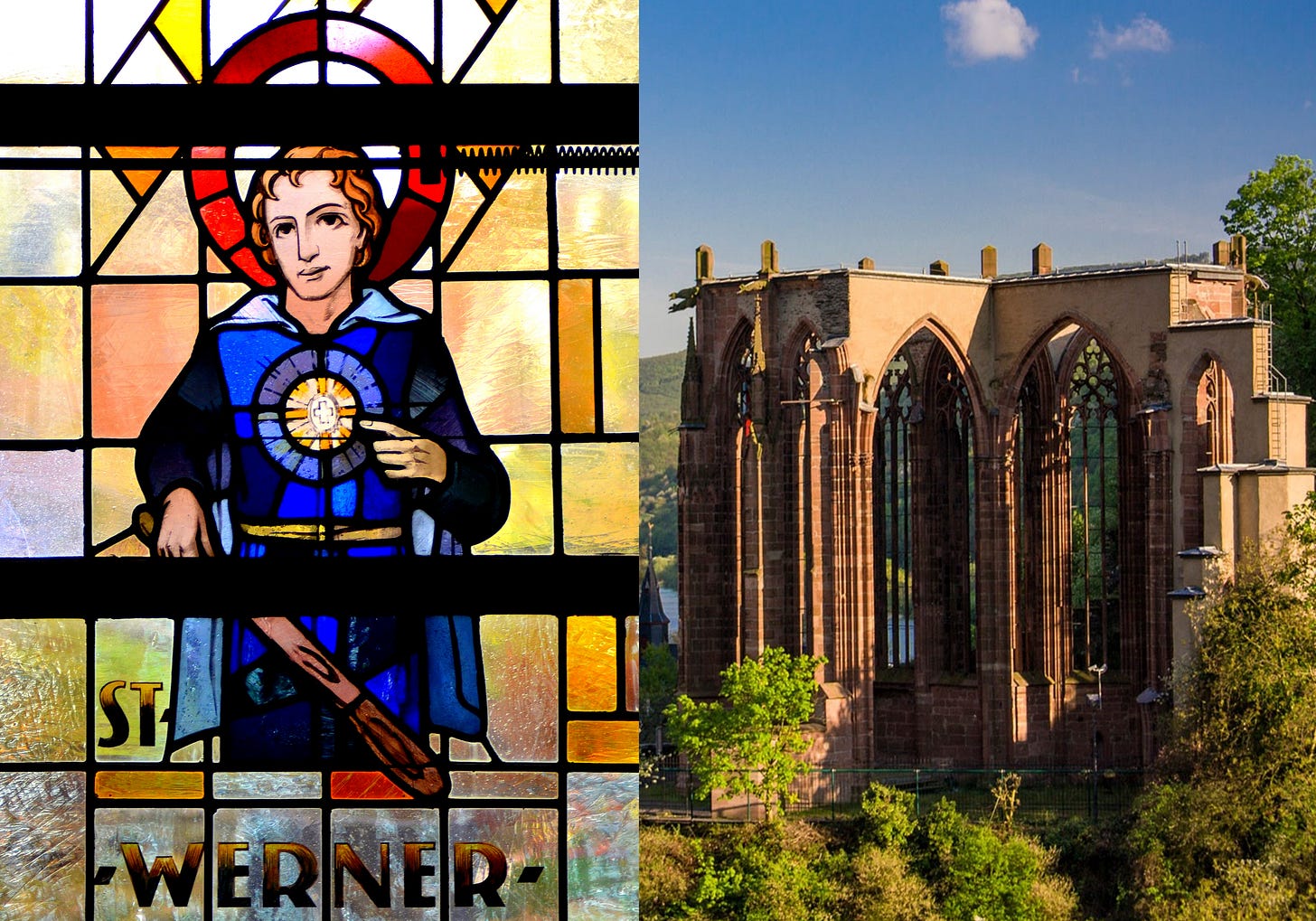
1288 A.D. - On April 17th, during the Easter period, the Jewish community in Bern was involved in the abduction and ritual murder of a young boy named Rudolf. The child was subjected to severe torture and ultimately killed by having his throat cut in a cellar. The main perpetrators were executed by being broken on the wheel, and their accomplices were expelled from the city. The Bernese council then decided to prohibit Jews from residing in the city. Rudolf was subsequently canonized by the Church.50 For several centuries, his grave in the parish church in Bern was a site of pilgrimage, “until the new Gospel, as those who believe differently like to say, came into fashion, and the original reason of all this taken away…”51
1303 A.D. - During Easter, members of the Jewish community in Weißensee, Thuringia, were involved in the abduction and murder of a young boy named Conrad Bächerer. The child was subjected to extreme brutality: his muscles were severely cut, his veins were opened, and his blood was drained from his body.52 Following this, his corpse was desecrated and hung in a vineyard as an act of mockery. In response to these events, a military unit led by Friedrich,53 the son of Landgraf Albert of Thuringia, conducted a raid against those implicated in the crime and executed them.
1305 A.D. - During the Easter season in Prague, members of the Jewish community crucified a boy who, driven by poverty, had been forced to serve them. The boy was stripped naked and nailed to a cross, where he was subjected to relentless flogging until he ultimately bled to death.54 The outrage among the local population was so intense that they took matters into their own hands by attacking the Jewish Quarter and enacting a violent reprisal that resulted in the massacre of the entire Jewish population of Prague.55
1331 A.D. - In the town of Überlingen, members of the Jewish community were involved in the death of a local citizen’s son, identified as the child of a man named Frey. The discovery of the boy's body at the bottom of a well revealed multiple incisions, indicating the extraction of his blood prior to his death.56 Following the discovery, the local authorities, without awaiting the approval of the Emperor, who was known for his favorable stance toward the Jewish community, took swift action.57 The regional authorities carried out the execution of the Jews deemed responsible for the crime by imprisoning them within a large stone building, where a fire was ignited on the lower floors. Those who sought to escape by jumping from the roof were swiftly killed by the mob that had gathered below. Additionally, reports have surfaced regarding alleged miracles associated with the remains of the child martyr.58
1345 A.D. - In Munich, Jews subjected a young child named Heinrich to a brutal and violent death. They meticulously drained all his blood through a series of piercings and incisions, opening his veins and inflicting over sixty stab wounds.59 The atrocity was uncovered by chance, leading to the conviction of several Jews who were sentenced to be executed by fire.60 In the aftermath of this atrocity, the church canonized Heinrich.61
1394 A.D. - On September 17, King Charles VI of France issued a decree ordering the permanent exile of the Jews, the forfeiture of all their claims, and the confiscation of their real estate, citing incidents of ritual murders of children and other intrigues injurious to the community.6263
1429 A.D. - A young boy named Ludwig von Bruck, the son of a Swiss man from Ravensburg, Württemberg, was ritually murdered during a Jewish feast. The boy was serving as a scullion in a Jewish household. Three Jews, Aaron, Anselm, and Moses conspired to murder him. They bribed a driver to transport his body in a sack to the forest of Haslach, where other Jews participated in stabbing and hanging the body from a tree, subjecting it to various ritual tortures and sexual violations. The driver later confessed, leading to his execution by the wheel, while Aaron, Anselm, Moses, and the rest were burned alive. The relics of the murdered boy are preserved in the chapel of St. Vitus, on the mountain south of Ravensburg.6465
1442 A.D. - On Good Friday, a four-year-old girl named Ursula Pöck disappeared in Lienz, Tyrol.66 After an extensive search over several days, her body was eventually discovered in a creek, covered in puncture wounds and completely drained of blood. Subsequent investigations led to the arrest of several Jews in Lienz as suspects in the murder. A Christian woman, Margaret Praitschedlin, confessed to luring the child to the Jews in exchange for money.67 Samuel, the Jew who first assaulted the child and inflicted the most severe injuries, was executed by being broken on the wheel.68 Praitschedlin, along with two elderly Jewish women, was burned at the stake. Following these events, Jews were permanently prohibited from entering the city of Lienz. In 1494, the Emperor issued the “Edict of Schwäbischwerd of 1496”, mandating their expulsion. Among the reasons cited for this action:
“Jews have pitifully tortured Christian children and used their blood for their damnable substance […] There is almost no land, and in each land, hardly one region to be found, in which the Jewish cruelty has not washed its murderous hands in the blood of innocent Christian children.”6970
The inscription at her grave in the cemetery of the city parish church read: “Thomas Pöck had this made to the memory of his daughter Ursula, whom the Jews tortured on Good Friday and who lies buried here.”71
1452 A.D. - In Savona, several members of the Jewish community were involved in the killing of a two-year-old child. The body of the child was punctured repeatedly, and the blood was collected in vessels typically used during circumcision rituals. The blood-drained corpse was then discarded into a cesspool.72 An eyewitness, the young son of the physician Salomon of Genoa, later recounted the event. He recounted how one individual held the child by the right arm, another by the left, and a third by the head, while a fourth used a sharp instrument to stab the child’s belly and heart. As the child succumbed, blood was collected in a basin, and the body was hidden away. They ate fruits, such as apples and berries, after dipping them in the collected blood.73 The witness claimed to have consumed some of this, and the horror of the experience overwhelmed him so much that he was unable to eat for two days.74
1453 A.D. - In Breslau, a group of Jews lured a child to them and, over time, fed him to prepare him for a ritual sacrifice. They placed the child inside a barrel outfitted with nails. This barrel was then rolled back and forth repeatedly until the nails had pierced the child's body in multiple places, effectively causing the child's blood to be drained.75 This gruesome ritual was later confirmed by a local Jewish woman who had converted to Christianity.76
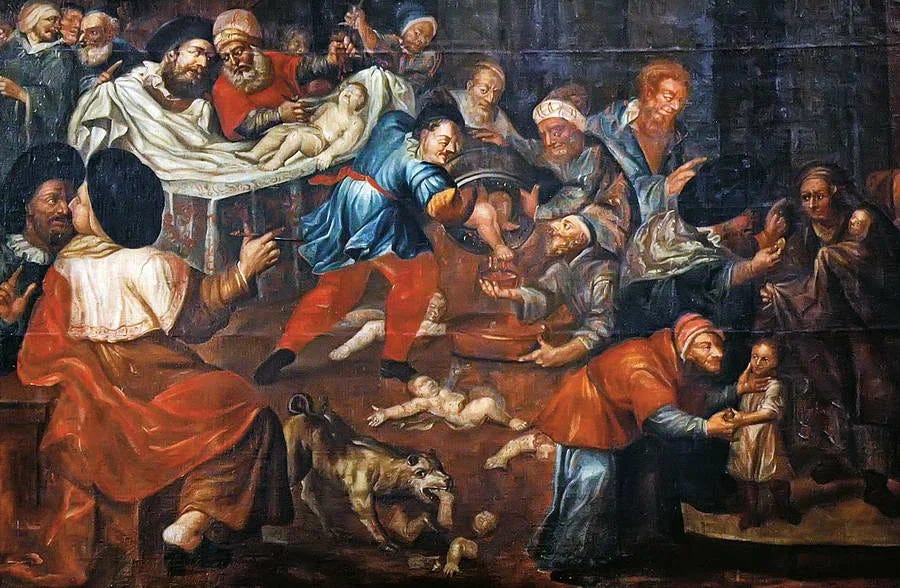
1462 A.D. - In July, ten Jewish merchants traveling through the Inn Valley made an agreement with Hans Mair, a farmer from Rinn near Innsbruck. Mair, the godfather and uncle of three-year-old Andreas Oxner, agreed to hand over the boy to the merchants in exchange for gold.77 The boy’s mother, working as a harvester in Amras, had entrusted Andreas to Mair's care. After she left, Mair signaled the merchants, who then entered his home, paid him the agreed sum, and took the child.78 The merchants, accompanied by a rabbi, performed a ritual sacrifice on a stone block, (which survives in historical tradition today as the “Jew-stone”) in a nearby birch forest, with Andreas as the victim. The boy was circumcised, bled, and his body desecrated before being hung on a tree. The murderers escaped, and Mair eventually went mad, confined to his home.79
Andreas was initially buried in Rinn’s cemetery, later moved to a niche where his story is immortalized in image and inscription.80 The cult of the child martyr Andreas of Rinn has endured to this day. The Diocese of Brixen celebrates his feast on July 12th, honoring him as its patron.81 Today, Judenstein is a district of the village of Rinn, Austria, in the state of Tyrol. The church dedicated to Andreas is lavishly decorated with paintings and contains the large stone within the nave of the church.82
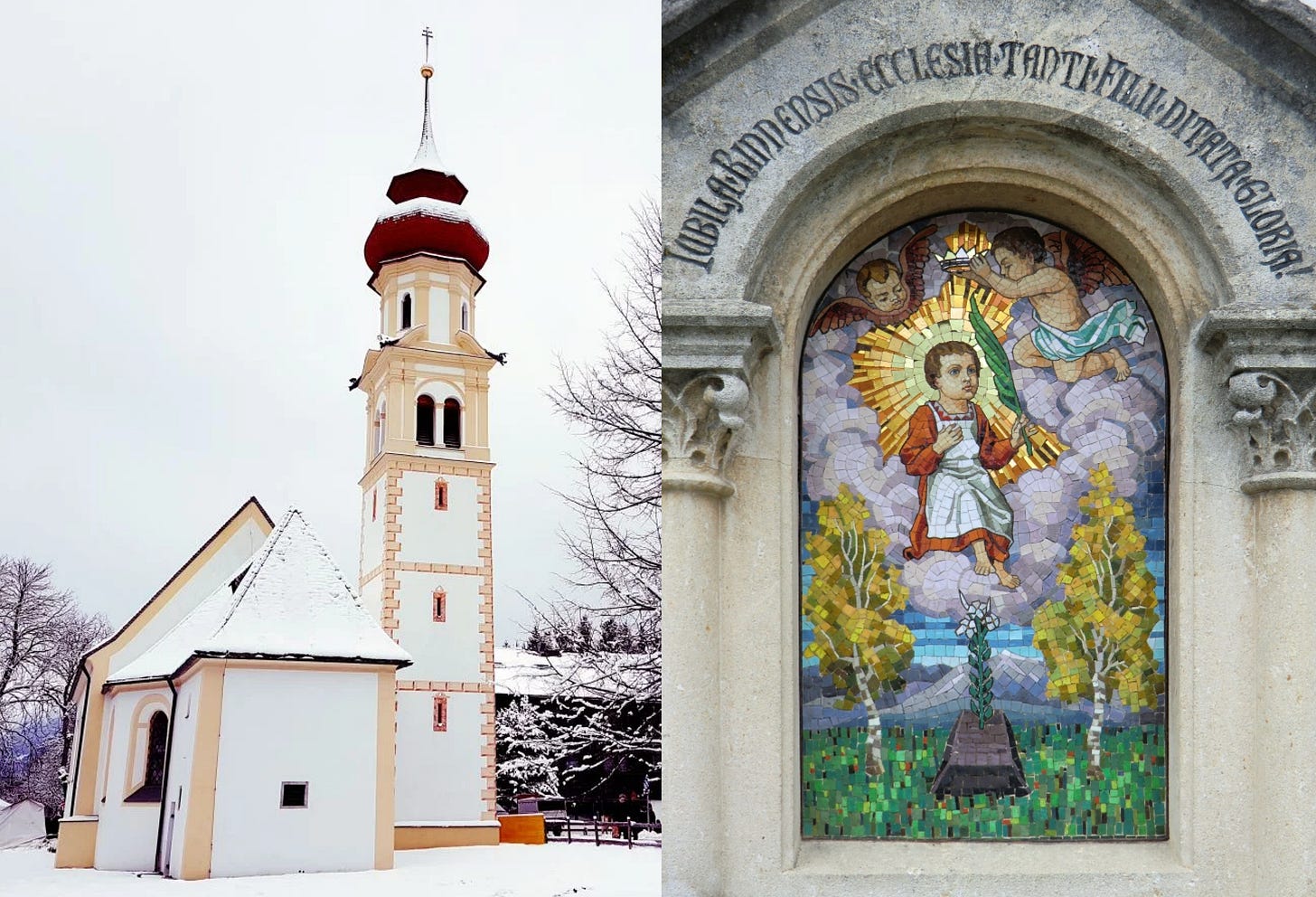
1468 A.D. - On Good Friday, in the Spanish city of Sepulveda, under the direction of Rabbi Solomon Picho, a young Christian girl was nailed to a cross, and her body was pierced in multiple places.83 After a thorough examination of the evidence and testimonies, the principal Jewish perpetrators were sentenced to death. Those who participated in the torture were divided into two groups: one group was condemned to death by hanging and breaking on the wheel, while the other group was strangled in prison.84 Following these executions, the remaining members of the Jewish community were expelled from the city.85
1475 A.D. - In Trent, just before Easter, a two-year-old boy named Simon went missing. On Good Friday, Simon's father sought assistance from the bishop to locate his son.86 The next day, a cook named Seligman, who worked for a wealthy Jewish man named Samuel, informed the authorities that he had discovered Simon’s body in the water cellar of Samuel’s home (adjacent to the cellar was a hall used as a synagogue).87 Upon examination by local physicians, it was determined that Simon had not died from natural causes but had been drained of blood, potentially in a ritualistic manner.88 The court reached its final verdict, convicting fifteen members of the Jewish community, including Samuel, of the murder of Simon of Trent. They were sentenced to death and subsequently burned at the stake.89
Maximilian I, Holy Roman Emperor, actively supported the veneration of Simon of Trent and commissioned a silver monument in the child’s honor.90 When Maximilian was crowned emperor in 1508, he had Simon's relics carried in a ceremonial procession. Later, in 1588, Pope Sixtus V officially acknowledged the local devotion to Simon, granting it recognition that was effectively similar to a decree of beatification.91
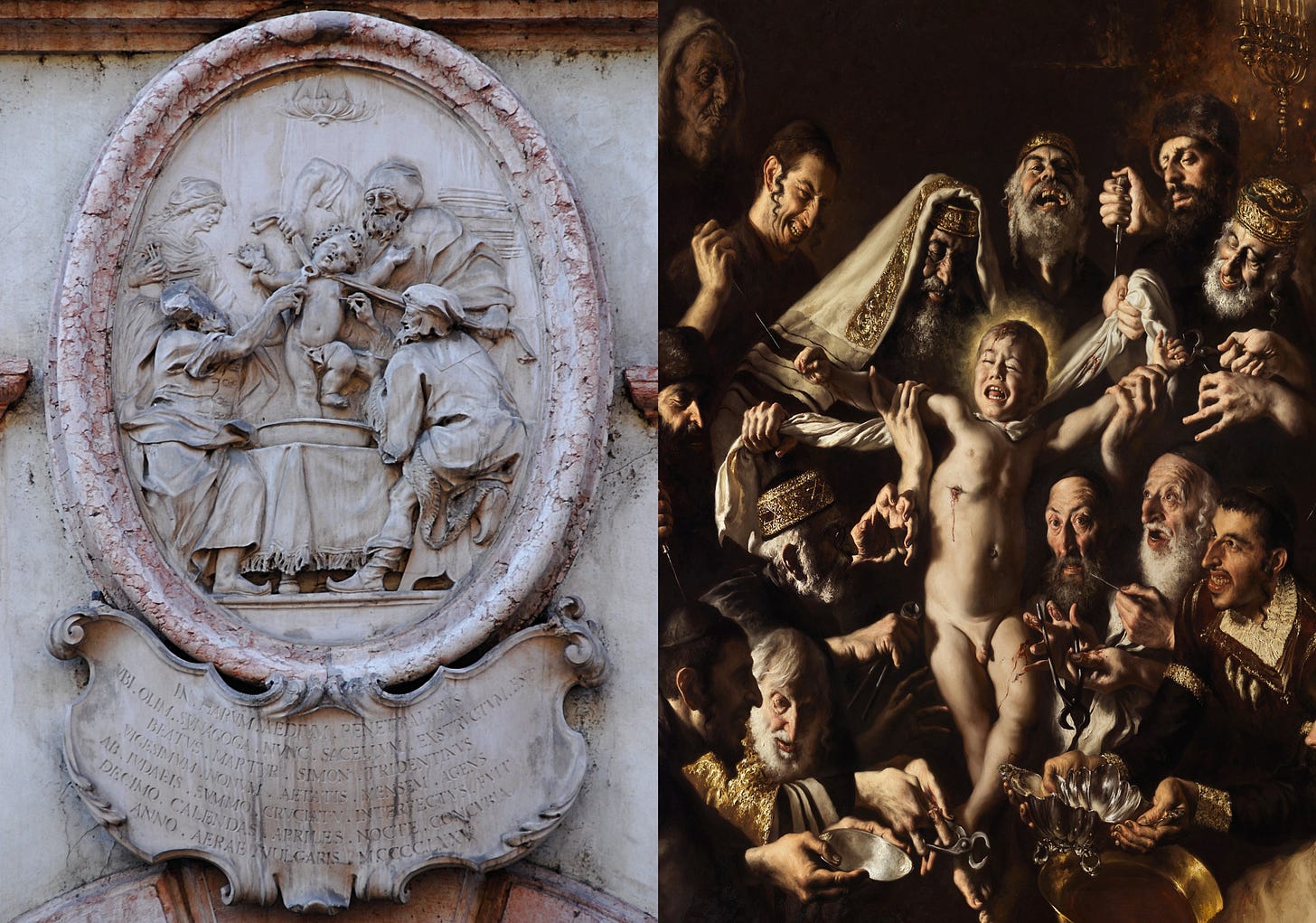
1480 A.D. - In the Portobuffolé region, a seven-year-old boy named Sebastiano Novello from Bergamo was brutally murdered by several Jews, which drained his blood. Their guilt was proven beyond doubt during extensive and lengthy hearings. Subsequently, on St. Mark's Place in Venice, in front of the Doge's Palace, the perpetrators were publicly executed by burning.9293 Sebastiano was later canonized. The Italian humanist from Verona, Georgio Sommariva, wrote the text: “Martyrium Sebastiani Novelli trucidati a perfidis Judeis” (The Martyrdom of Sebastiano Novello, Butchered by the Treacherous Jews), which was composed in verse and printed in Treviso in 1480.94
1485 A.D. - During Holy Week in early April, five-year-old Lorenzino Sossio was tortured and murdered in a ritualistic manner by members of the Jewish community of Bassano, in the city of Vicenza (Marostica).9596 This event triggered the expulsion of Jews from Vicenza and its surrounding territories, as decreed by Doge Marco Barbarigo on April 21, 1486.97 Reports of miracles associated with Lorenzino’s body soon followed,98 and he became venerated as “Blessed Lorenzino Sossio”. Pope Pius IX officially beatified him on September 5, 1867, and his liturgical feast was celebrated annually on April 15 in the dioceses of Padua and Vicenza.99 This veneration continued until 1965, when the Second Vatican Council ordered its suppression.100

1486 A.D. - In the city of Regensburg, a disturbing incident involving the ritualistic torture and murder of six Christian children by members of the local Jewish community was reported.101 The bodies of the six victims were discovered in the cellar of a house owned by a Jewish man identified as Josfol.102 During the subsequent investigation, authorities uncovered a large stone block positioned in a manner resembling an altar at the same location. Notably, traces of blood were found on the surface of the stone, further heightening suspicions of ritualistic practices associated with the crime.103
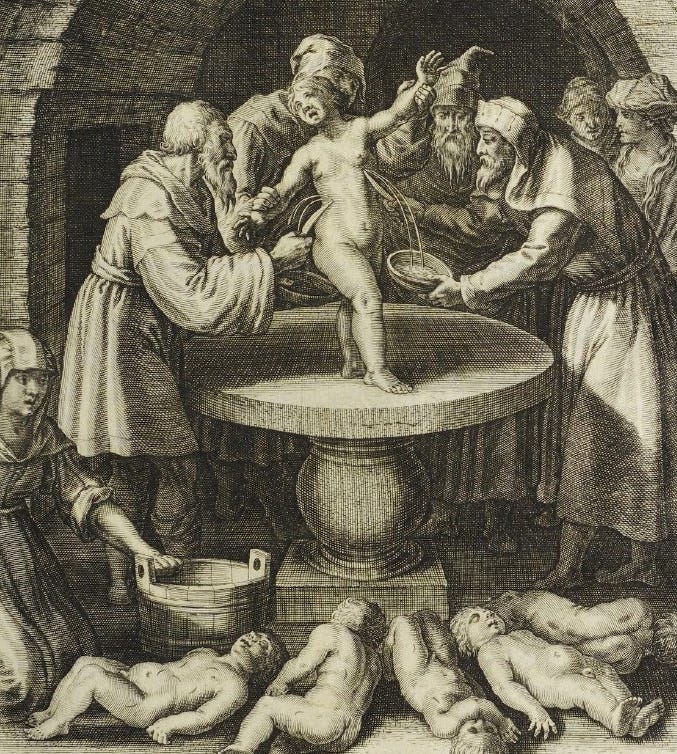
1491 A.D. - On Good Friday, in Guardia near Toledo, a small child was nailed to a cross by members of the Jewish community, after he had been stabbed and scourged.104 Some reports suggest that, as part of the horrific act, the child's heart was removed, purportedly for ritualistic purposes. The child was canonized and is known as “El Santo Niño de La Guardia” (Holy Child of La Guardia). On November 16, 1491, an auto-da-fé was held outside of Ávila that ended in the public execution of several Jews and conversos. The suspects had confessed to murdering the child. Among the executed were Benito García, the converso who initially confessed to the murder.105 This incident was used by Isabella I as one of the reasons for the expulsion of the Jews after the fall of Granada in 1492.106
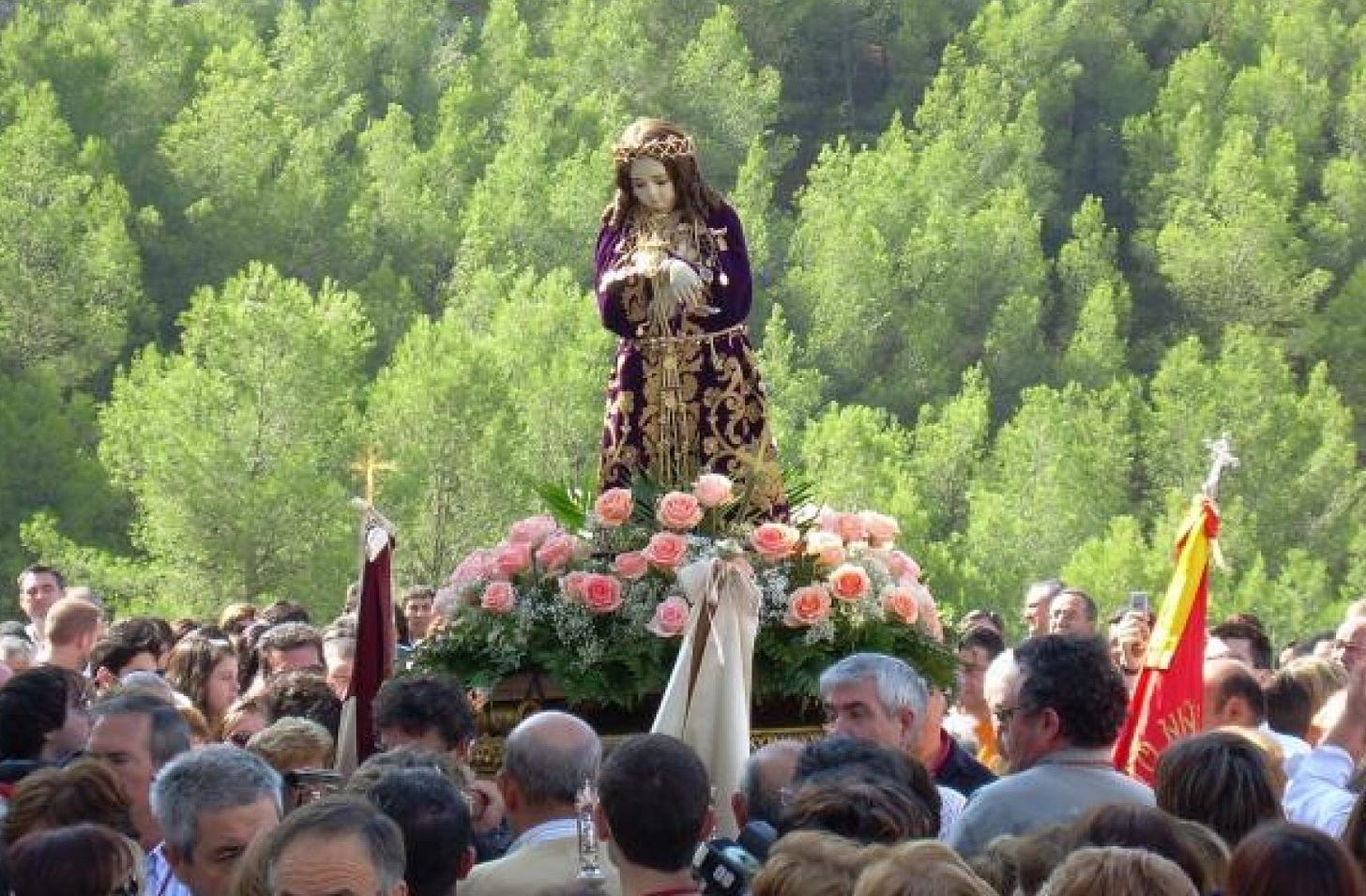
1494 A.D. - In the town of Tyrnau in Hungary, an incident occurred involving several members of the Jewish community, including two women. They abducted a young child and transported him to a secluded house. After forcibly silencing the child, they methodically incised the child's veins, carefully draining the blood with precision until every drop had been extracted. A portion of this blood was preserved for later use. Following this, the child's body was dismembered.107 During a subsequent search of the houses belonging to the Jewish community, traces of blood were found in one residence. This discovery led to the arrest of those involved in the crime.108 Upon interrogation, the Jewish women who were questioned first confessed to the act, providing detailed accounts of the events that transpired. Following their confessions, fourteen Jews were sentenced to death by burning.109
1510 A.D. - In Berlin, the Jews Salomon, Jacob, Aaron, Levi Isaac, Rabbi Mosch, and the butcher Jacob were accused of buying a four-year-old Christian boy for 10 florins from a stranger, laying him on a table in a cellar, and puncturing him with needles in the large, blood-rich veins until he was finally slaughtered by the butcher Jacob. An enormous trial began, and eventually, a hundred Jews were locked in the Berlin prison. They partially admitted to having bought Christian children from strangers, stabbing them, draining their blood, and drinking the blood in case of illness or preserving it with tomatoes, ginger, and honey. No fewer than 41 of the accused Jews were sentenced to death by burning after their confession. All the other Jews were banished from the Mark of Brandenburg.110111
1529 A.D. - On Ascension Day in the market town of Bösing, Hungary, several Jews kidnapped a wheelwright's child. They took him to a cellar, drained his blood using quills and tubes, and hid the bottles in the synagogue. The next day, a woman discovered the child's mutilated body in thorn bushes outside the village, with hands bound. Local authorities identified the remains as belonging to a missing child, recognized by the father. The gruesome nature of the death led to suspicion of the Jewish community, especially given previous similar crimes. David Saifmacher confessed that a Jew named Michel had lured the child into his home, where others tortured him. Saifmacher also revealed he had removed the body of another Christian victim five years earlier, corroborated by another Jew, Szecho. Thousands gathered to hear the verdict. The court ordered the execution of thirty Jews from Bösing by burning. Jewish children were taken in by local families and baptized.112113
1540 A.D. - During the Easter period, a three-year-old boy named Michael Piesenharter, who resided in Sappenfeld, was abducted by Jewish merchants operating in the vicinity of Ingolstadt. The child was forcibly taken to an undisclosed location, where he was secured to a pillar and was subjected to severe torture over a span of three days.114 During this period, the boy's fingers and toes were mutilated, and numerous incisions were made across his body in the shape of crosses.115 Following his death, the body was concealed under a layer of dry foliage. The discovery of the child's body was aided by a shepherd's dog. Additionally, a Jewish child disclosed to a non-Jewish companion that a child had been tortured to death.116 The Jewish community of Sappenfeld was expelled.117
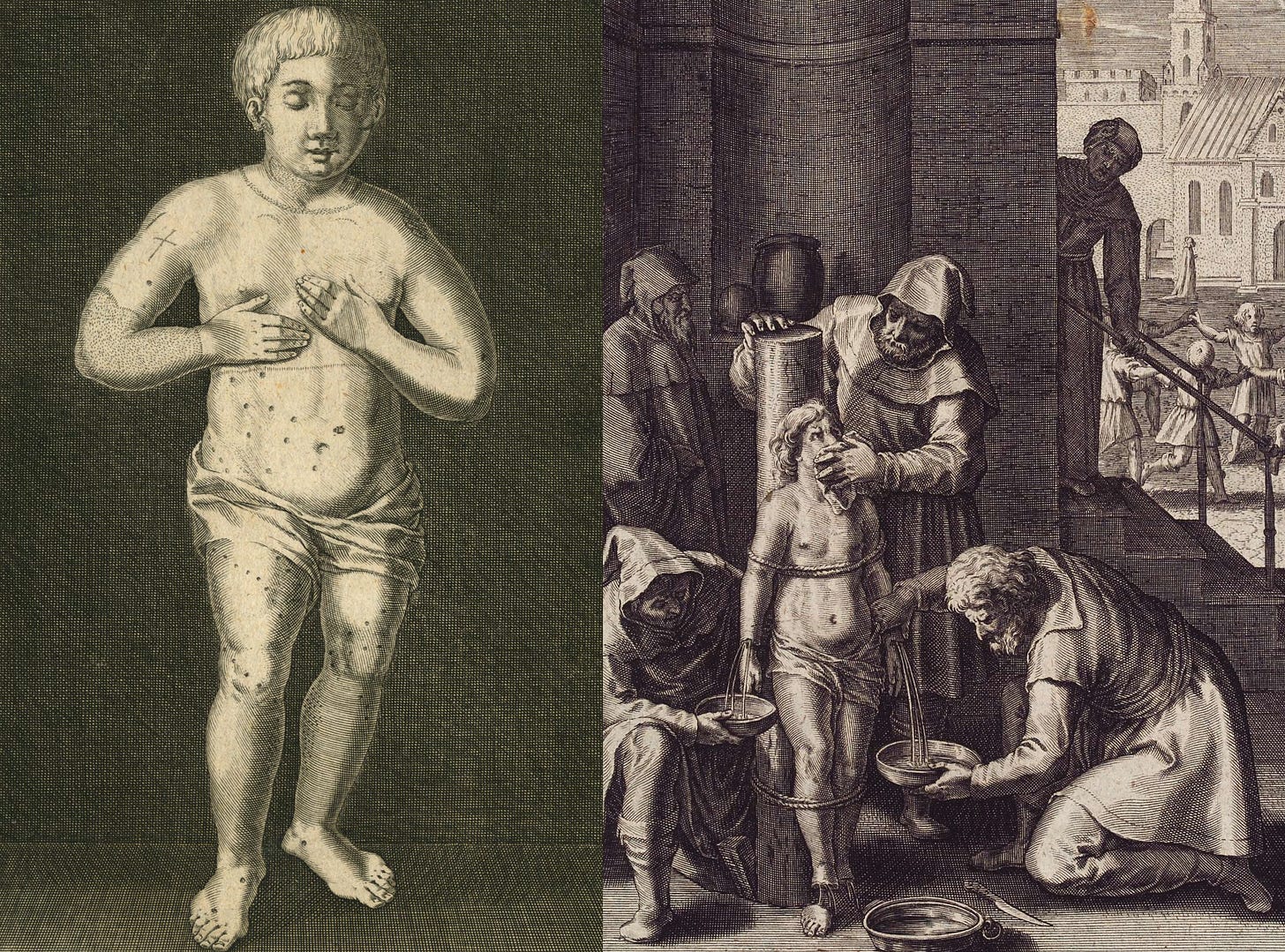
1597 A.D. - In the small town of Szydłów, a young peasant boy was abducted and killed by members of the local Jewish community. The blood from the boy's body was reportedly used in various rituals, including the consecration of a new synagogue in Szydłów.118 When the boy's body was later discovered in an open field, it bore numerous piercing wounds, particularly in the eyelids, neck, veins, limbs, and sexual organs.119 According to the Bollandists, the body was found to be severely contracted, suggesting that the child had been subjected to torturous methods involving fire.120
1598 A.D. - In the Polish province of Podolia, a four-year-old boy named Albert Swierzanów was abducted by two young Jewish men and subjected to ritual slaughter according to Jewish rites (shechita) under horrific torture, four days before Passover. The act allegedly occurred in the presence of some of the most influential Jews in the region. The boy's body was hidden under barrels and later discarded in a marshy area.121 One of the accused, Isaac, confessed that the child had been hidden in a cellar for weeks before he killed him with a knife used for cattle slaughter, collecting the blood in a pot.122 Another suspect, Aaron, expressed a desire to convert to Christianity. However, when he learned that conversion would not spare him from punishment, he declared his preference to die as a Jew.123
1599 A.D. - In March, in Vilna, a seven-year-old boy named Szymon Kierelis was subjected to ritual torture and killed by several Jewish individuals. The child’s body exhibited over 170 inflicted wounds, which were inflicted using knives and scissors. In addition to these wounds, numerous cuts were made under the nails of his fingers and toes.124125 The Bernardines (Franciscans) agreed to inter the body of Szymon Kierelis, in their church. In 1623, they installed a commemorative plaque honoring his death. By 1639, in Łęczyca, the child's body was placed in a glass coffin within the church, accompanied by a commissioned painting depicting Jews surrounding the boy's body.126
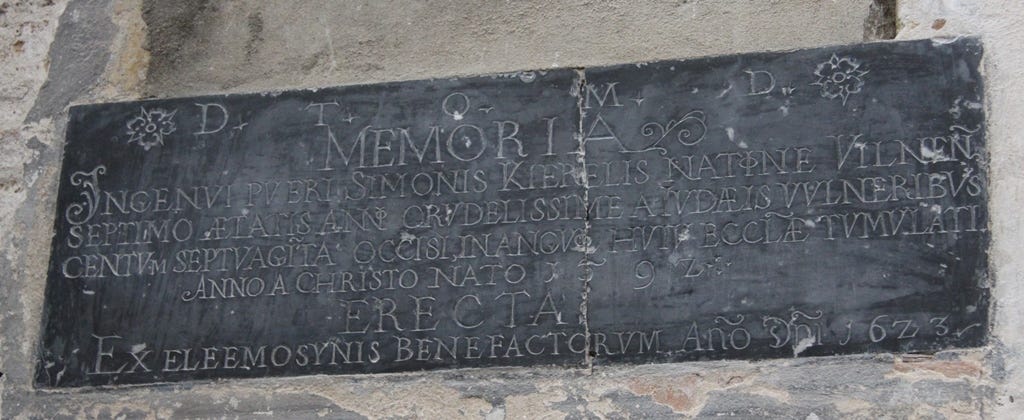
1684 A.D. - In the village of Zwierki, 6-year-old boy Gabriel was kidnapped from his home during the Jewish Passover, while his parents, pious Orthodox Christians Peter and Anastasia Govdel, were working in a nearby field. Shutko, a Jewish arendator of Zwierki, carried him to Bialystock, where, in the presence of several Jews he pierced him with sharp objects and drained his blood for several days, before bringing the dead body back to Zwierki and dumping it in a local field.127128129 After the discovery of his body, Gabriel was buried in Zwierki. In a funeral of 1720, the grave was accidentally unearthed and the body was found to be “supernaturally incorruptibile”; the remains were then transferred to the crypt of Zwierki's Orthodox church. Gabriel's cult grew over the years, largely due to healings at his grave. In 1746, the relics were transferred to Zabłudów and then onto various locations.130 Gabriel of Białystok, also known as Gabriel of Zabłudów, is a child saint in the Russian and Polish Orthodox Church. His feast day is held on April 20.131
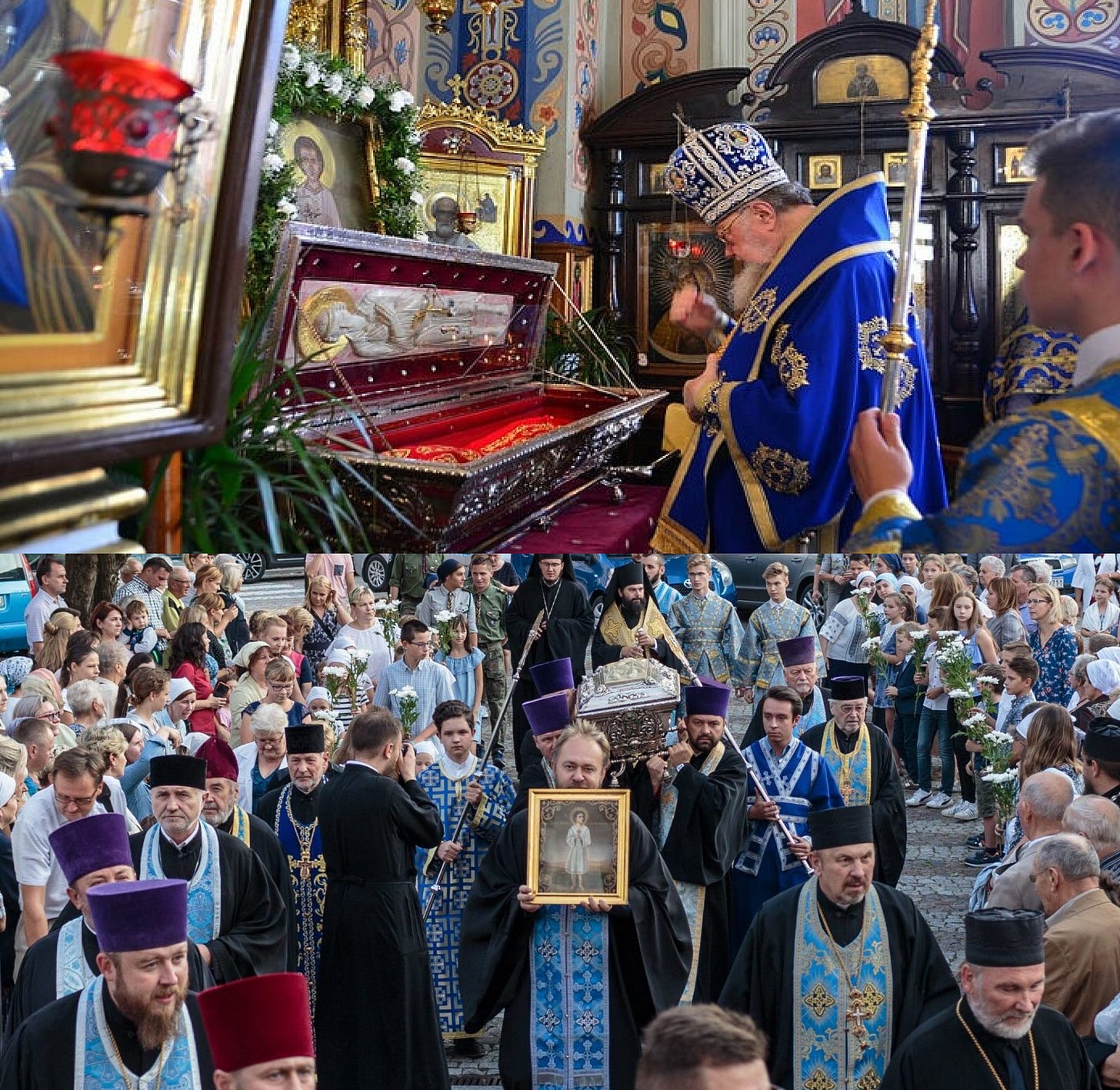
1669 A.D. - On September 25, the eve of Rosh Hashanah, three-year-old Didier Le Moyne disappeared in the woods near the village of Glatigny. The body was later discovered, horrifically mutilated.132 A Jewish man named Raphael Levy, who had been observed riding towards Metz on the same day, was accused of abducting the child. Levy was subsequently arrested, tried, and sentenced to death by burning on January 17, 1670, by decree of the Parlement of Metz.133 Following the trial, the Parlement petitioned King Louis XIV to expel the 95 Jewish families residing in Metz from the province. However, the king prohibited any further punitive actions against the Jewish community.134
1744 A.D. - On August 5th, Joseph Locherer and Anna Aberhämin lost their 8-year-old son, prompting a thorough four-day search. On August 9th, the boy was found dead in the Montiggl Forest by his father. Based upon the interrogation protocols dated August 12, 1744: A young herdsman reported hearing a child's cry in the forest and indicated the direction. The boy's father discovered his son lying on a tree trunk, brutally murdered. The child's neck had been stabbed, with red welts indicating strangulation. His body was mutilated and circumcised. The body had been drained of blood and was extensively wounded.135
While the judges argued over jurisdiction and court fees, a Jew who had been discovered by several witnesses to have behaved suspiciously and who had been noticed in the area for a long time, escaped.136 The priest of St. Pauls, Edmund Leonhard, immediately recognized the death as a Jewish ritual murder. A marble sarcophagus containing the boy's body remained on display in the parish church of St. Pauls until 1965, and bloody items of clothing were kept as relics.137
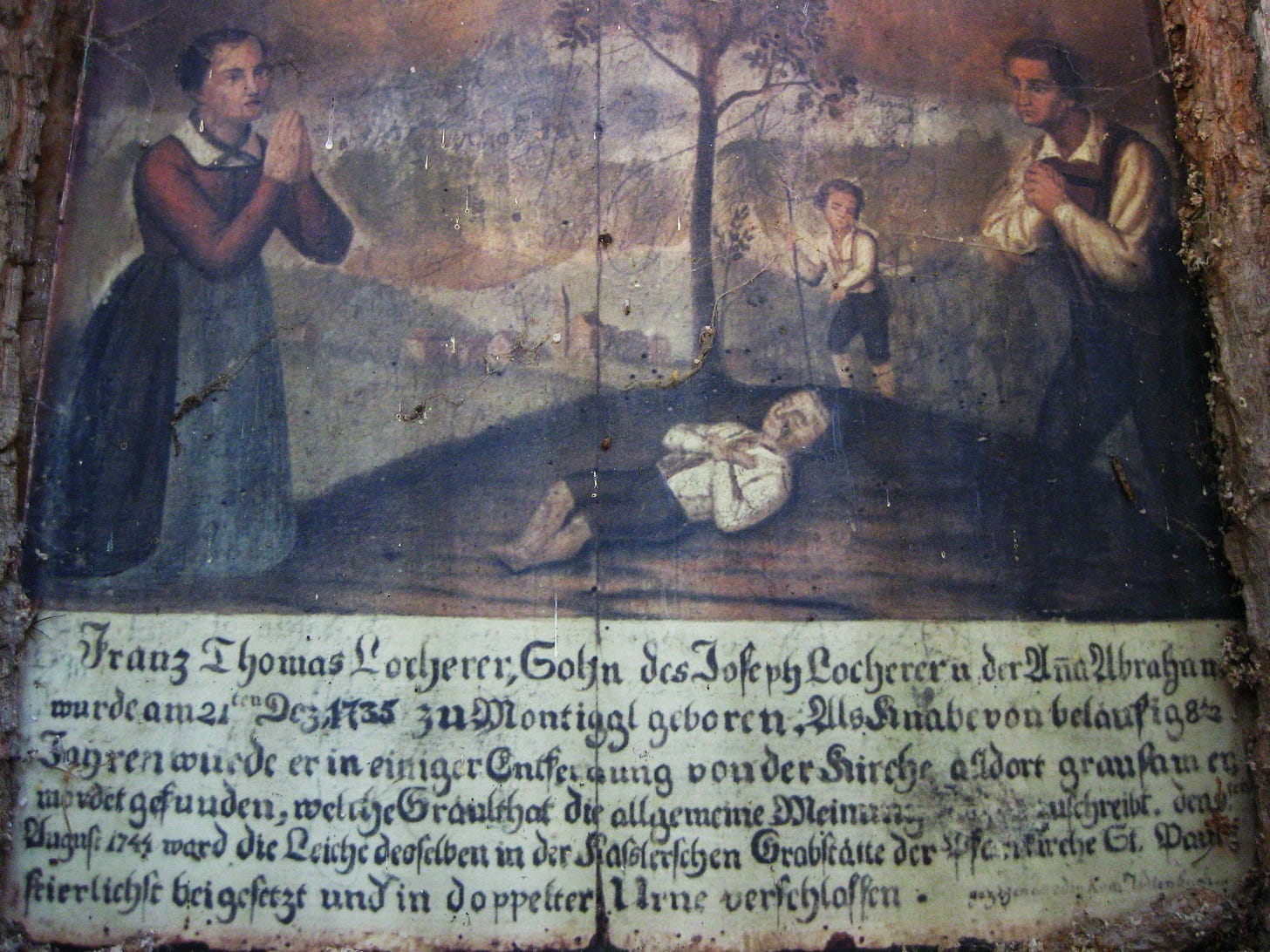
1747 A.D. - In Zasław (Iziaslav), the mutilated body of an unidentified man was found in the melting snow.138 The right hand had been amputated at the fingers, with blood vessels opened to the elbow and bones splintered. On the left hand, three fingers were missing, and the blood vessels and tendons were pulled out to the shoulder. Three toes on the left foot were amputated, nails were torn off, blood vessels were cut out of the calves, and the teeth were knocked out. The entire body bore numerous stab wounds.139 The interrogations revealed that the murder had been carried out under the orders of the Kahal of Zaslav (קהל/kahal meaning Jewish congregation). A wandering journeyman had been intoxicated at a Jewish gin-mill, then tortured, mutilated, and ritually killed in the presence of the Kahal elders. The torture occurred over several days, with the blood collected and sent to the Rabbi of Zaslav. The Jewish innkeeper, the Kahal elder, the hazan (cantor), the mohel (surgeon), and the beadle of the Zaslav synagogue, were indicted.140 On April 26, 1747 eight Jews were sentenced to what the court termed “the most serious and cruel punishment,” which included live impaling, flaying, quartering alive, and on one instance the removal of a heart.141
1753 A.D. - On Good Friday, 20 April, in a village near Kiev, three-year-old Stefan, the son of nobleman Adam Studzieński, was kidnapped by members of the Jewish community. The child was hidden in a tavern until the end of the Sabbath, after which he was ritually sacrificed with the involvement of Rabbi Schmaja.142 The blood was collected in several bottles. The body was then discarded in a nearby forest, where it was discovered by local villagers on Easter Sunday. Documents related to this case were recorded and preserved at the court in Kiev.143 The child was considered a martyr and his remains were moved to the local church.144
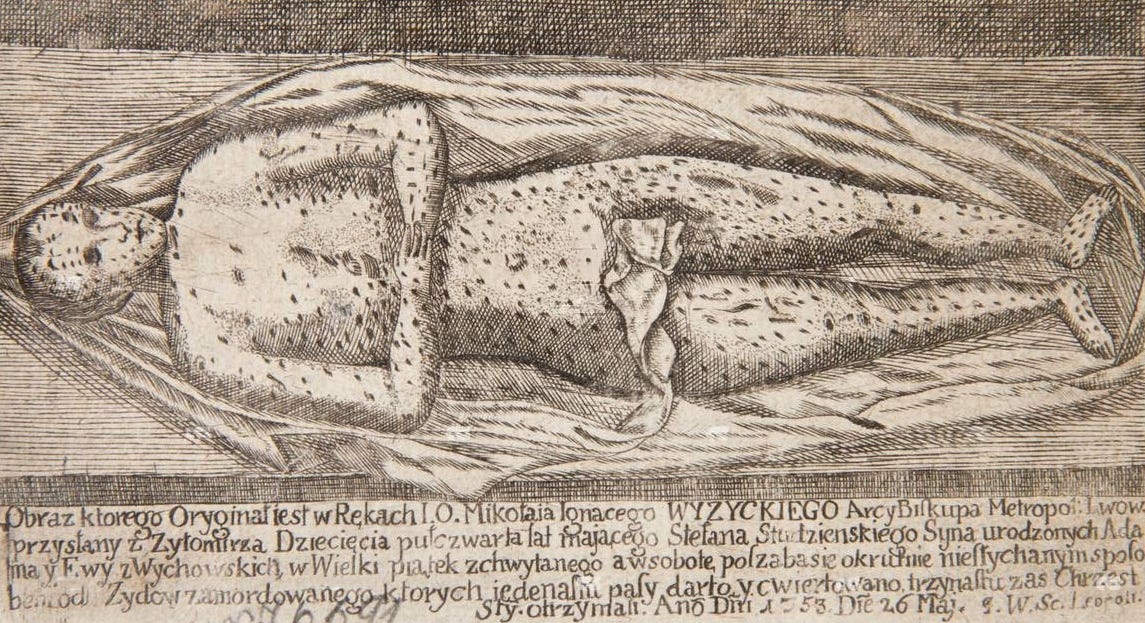
1791 A.D. - On February 21, in the small village of Pér, a thirteen-year-old boy named Andreas Takáls was ritually murdered. Abraham, a Jewish man, was arrested in connection with the incident. During the court proceedings, Abraham's son testified, stating that his father, along with the rabbi and other Jewish individuals from outside the area, had participated in the killing of Andreas.
“At night Father came home with some other Jews, among whom was also the Károlyer Rabbi. They took from Andreas his guba (fur coat) removed his shirt […] stuffed his mouth with clay, and Jakob tied his feet together, hung him up by a cord from a beam, and then cut open the vein on the right side of his neck, while Father held a leaden basin to catch the blood.”145
Daniel Héczey, a Reformed Pastor and eyewitness to the autopsy, noted that during the dissection on February 24, the boy's body was drained of blood, with only a few drops emerging from the left arm, while the internal organs were completely bloodless, and the diaphragm, sexual organs, and bladder were torn apart.146
1803 A.D. - On March 10th, a 72-year-old Jewish man named Hirsch from Sugenheim came to the hamlet of Buchhof and abducted a two-year-old child. When the child was noticed missing, Hirsch suddenly appeared from a nearby forest, crossing a field back to Buchhof, where he joined the search efforts for the child.147148 The following day, Hirsch denied having been in Buchhof that day. The child's father attempted to contradict Hirsch's statement with witness testimonies but was met with threats and hostility from the judicial authorities.149 Twelve days later, the child was discovered deceased, with wounds under the tongue and a bloody mouth. Despite the inclement weather, the child's clothing was found to be clean. The father was pressured into signing a document asserting that the child, who had still been warm at the time the body was found, had frozen to death…150
1823 A.D. - On April 24 in Velizh, three-year-old Fedor Ivanov was abducted by a Jewish woman named Khanna Tsetlina. The child was taken to the home of Mirka Aronson, where he was tortured to death, and his blood was extracted. On May 2, his body was discovered in a bush by a dog belonging to a man named Vasilii Kokhanskii.151 An autopsy revealed severe skin abrasions, multiple wounds from a blunt object, signs of strangulation, and empty intestines with no decay. Despite substantial eyewitness testimony against the Jewish suspects, the trial was abruptly dismissed, resulting in the acquittal of many charged individuals.152 Three non-Jewish key witnesses who testified that the child's blood was collected and distributed among Jewish communities were exiled to Siberia by the Russian State Council.153
1827 A.D. - A seven-year-old Jewish girl named Ben-Noud witnessed a disturbing scene from the roof of her relatives' house in Antioch. She saw two boys who were hung up by their legs and had blood streaming from their bodies.154 Horrified over this scene, she ran away crying. When she recounted the incident, her aunt explained that the children had been naughty and were being punished. Later, when the bodies of the boys were no longer present, she discovered a large brass vase filled entirely with blood on the floor of a room.155156
1834 A.D. - A Jewish woman who later converted to Christianity, was a witness in Tripoli when an old man was lured into an ambush by several Jews and hung up by his toes from an orange tree. The man was left hanging in this agonizing position for several hours. At the moment when the old man was near death, the Jews cut him through the neck with a ritual slaughter knife and left the body hanging until all the blood was collected in a basin.157 She later learned that the murderers had packed the body into a crate and had cast it into the sea. She later confessed this account to the Orientalist, Count Durfort-Civrac.158
1840 A.D. - On February 5, an Italian monk named Father Thomas passed through the Jewish quarters to post a notice about an auction at the home of a deceased resident. When he did not return home for dinner, his Muslim servant, Ibrahim Amrah, went to the Jewish Quarters to search for him. Neither individual was seen again.159 A Jewish barber, Solomon Halek, confessed that upon arriving at David Harari's house, he encountered a gathering consisting of the three Harari brothers, Joseph Leniado, and two rabbis, Moses Abu el-Afieh and Moses Salonicli. He observed Father Thomas lying on the floor, with his arms bound behind his back and his mouth gagged. He was instructed to kill Father Thomas, but he declined, citing a lack of courage. He was permitted to leave after being promised money in exchange for his silence.160 David Harari used a large knife to slit Father Thomas's throat. Meanwhile, the two rabbis and Harari's brother meticulously drained his blood.161 David Harari's servant, Murad al-Fatal, was ordered to do the same to Ibrahim Amrah.162 He later confessed that the blood had been collected into a basin and then put into a white bottle, called khalabièh.163 Rabbi Afieh confessed that the blood was intended for making “consecrated bread” for specific Jewish holidays, but he also clarified that this bread was only given to “ḥakams and zealots”.164
The Office of the Governor-General, which included a rabbi who had converted from Judaism to Islam, asserted that the blood was drained for the Passover celebration. He noted that in Judaism, “there are two kinds of blood pleasing to God: the blood of the Passover and the blood of circumcision.”165 This statement likely references the Midrash Rabbah text, specifically “Ruth Rabbah 6:1”. Eliahu Picciotto, the Austrian Consul in Aleppo, reported the incident to Jewish communities across Europe.166 This led to the intervention of influential leaders within the global Jewish community, notably the Rothschild family167 and the Jewish financier and banker Moses Montefiore, who personally approached the Sultan of the Ottoman Empire to secure the release of the prisoners. Subsequently, the accused individuals were released.168
1843 A.D. - Historian and traveler Pierre Nicolas Hamont reported in his famous book “L'Égypte sous Mehemet Ali” (1843) that on the islands of Rhodes and Corfu, several children were ritually murdered by Jews. According to French diplomat and author Achille Laurent, in 1812, in Corfu, three Jews who had strangled a child were condemned to death in October. A short time later, the child of a Greek by the name of Riga was stolen on this island and was ritually butchered.169 Austrian writer and journalist Stauf von der March reported that in 1824, another case of ritual murder involving Jewish individuals occurred on the island of Corfu.170 Furthermore, a similar incident took place in 1840 on the island of Rhodes, where a twelve-year-old boy from the village of Trianta was ritually murdered.171
1879 A.D. - In Kutaisi, a group of Jewish individuals kidnapped and ritually murdered a six-year-old girl named Sarra Iosifovna Modebadze.172 Between her fingers, incisions had been made with a knife, and there were horizontal cuts on her legs just above the calves. Remarkably, there was not a single drop of blood left in her veins. With the assistance of influential Jews in Russia, those responsible for this horrific act managed to evade punishment.173 The incident, known as the “Kutaisi Affair”, quickly gained notoriety and spread throughout society. Fyodor Dostoevsky references this event briefly in a letter written in 1879:
“How disgusting that the Yids of Kutaisi [kutaisskikh zhidov] were acquitted…Here they are undoubtedly guilty.”174
1881 A.D. - In early April, a ritual slaughter occurred in Alexandria, involving a Greek boy named Evangelos Fornarakis. His body was discovered on the beach, completely drained of blood and pierced. His parents did not want to hand over the corpse to the Egyptian authorities, so it remained in their father's house, exposed to the public for several days, until it was forcibly transported to the Greek hospital, where Jewish and Turkish doctors determined that he had drowned.175 This incited significant unrest and led to a riot against the Jewish community. Despite the clear evidence of the crime, an international commission concluded that there was only a “possibility of murder”. The Jewish Baruch family, who were strongly suspected of the crime, were granted provisional freedom.176177
1882 A.D. - Two days before Passover in the village of Tisza-Eszlár, a 14-year-old girl named Eszter Solymosi disappeared while taking a shortcut home past a secluded synagogue. Her disappearance prompted an intense search by her mother and aunt, who approached the synagogue, where they encountered the temple servant, Scharf, and his wife. Their interaction was marked by unsettling remarks from the Scharfs, who suggested that Eszter might have simply fallen ill.178 A few days later, rumors began to spread when Scharf's young son mentioned to other children that he had overheard talk of a murder inside the synagogue.179180 On May 19th, following growing concern, a formal investigation was launched, leading to the detention of the Scharf family. During the investigation, the older son, Moritz Scharf, broke down and provided a detailed account of how Eszter had been lured into the synagogue, undressed, and subjected to a ritualistic slaughter. He stated before the court that he had observed the murder through the keyhole of the inner synagogue door.181 Throughout the proceedings, numerous individuals came forward with testimonies that further implicated members of the Jewish community, heightening tensions and fueling the belief that a ritual murder had taken place.182183
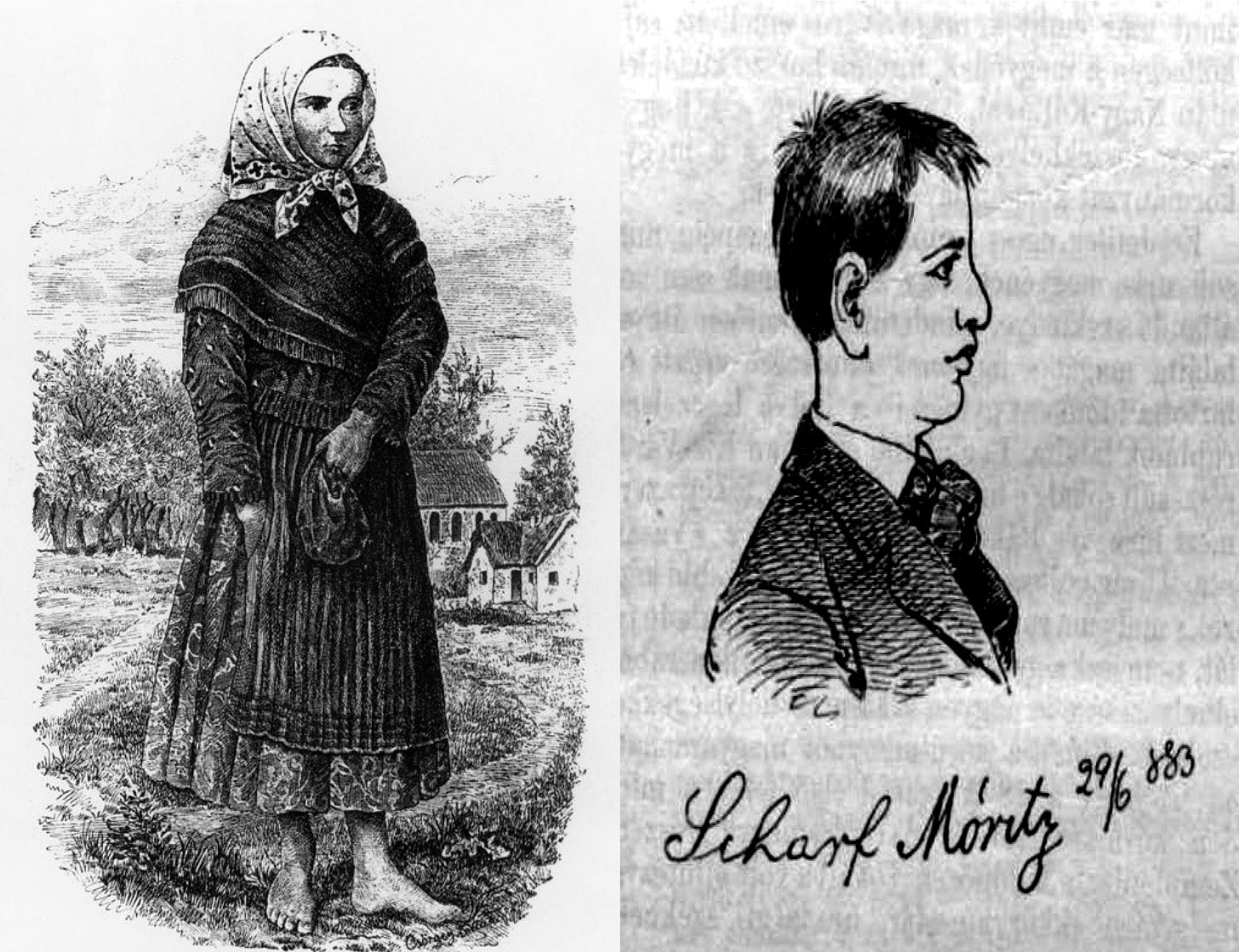
1891 A.D. - On the evening of June 29th in Xanten, the lifeless body of Johann Hegmann, a five-year-old boy and the son of a local carpenter, was discovered by a servant named Dora Moll.184 The body was found in a barn used for storing fruit, owned by a town councilman named Kupper.185 The child was lying on his side with his legs apart and bore a meticulously executed circular incision, suggesting a ritualistic motive and indicating the work of a skilled hand. His body appeared pallid due to significant blood loss. Prior to his disappearance, three witnesses observed him being forcibly taken into the residence of the Jewish butcher, Adolf Buschoff. Convinced by the overwhelming evidence, the townspeople demanded justice against Buschoff and his family, who narrowly escaped the ensuing public outrage. Despite the royal prosecutor of Xanten initially exempting Buschoff from investigation, he was eventually arrested due to the insistence of a renowned criminal lawyer from Berlin.186187
1891 A.D. - On April, the mutilated, bloodless body of an eight-year-old girl was found in a sack near a synagogue in Corfu. The body was discovered by Salomon Vita Sarda, a Jewish tailor who identified himself as her father. However, Sarda's composed demeanor raised suspicions. An autopsy later revealed that the child had been meticulously drained of blood through multiple needle punctures. The crime led to widespread rumors suggesting it was a ritualistic murder linked to Jewish customs. These rumors were supported by a medical report from doctors Elias Politis, Demetrios Papanikolas (police doctor), and Frankiskos Thermoyannis (municipal doctor), which confirmed that “there was not a drop of blood”.188 There were also claims that the victim was not Sarda's daughter, Rubina, but a Christian girl named Maria Dessyla who had been kidnapped in Ioannina.189 The Rabbi of Corfu submitted a forged Hebrew birth certificate asserting that the murdered girl was the daughter of Salomon Sarda. However, the official Greek civil registry contained no record linking the child to Sarda, despite his lengthy residency in Corfu. Four individuals were charged with the ritual murder: the tailor Salomon Sarda, the synagogue attendant Naxon, the Jewish community's grave digger, and a Jewish beggar named Ephraim.190191192
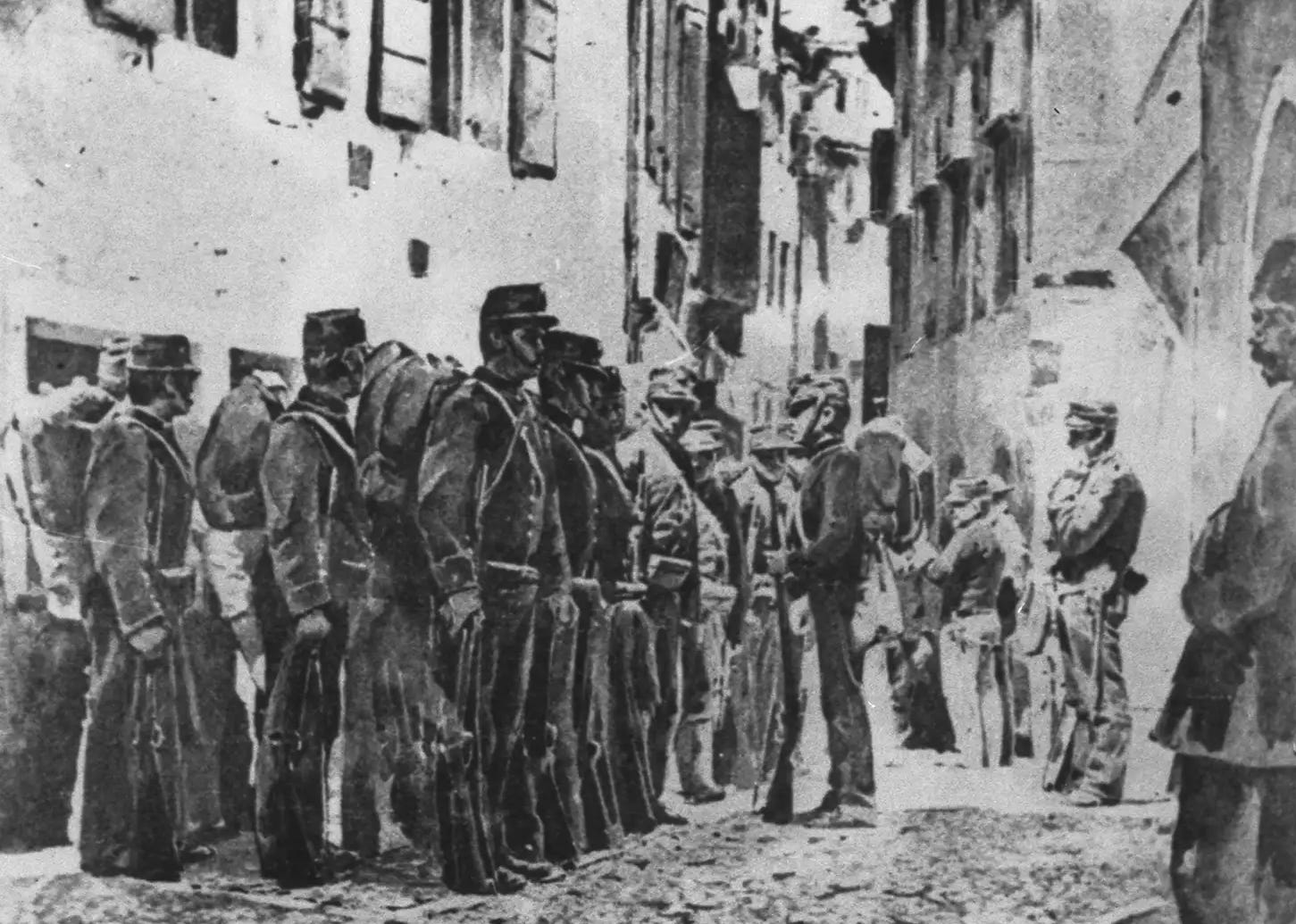
1892 A.D. - During the Jewish Passover in Port Said, an 85-year-old Rabbi named Carmona lured a four-year-old Greek girl, Helene Vasiliou, into his house. This act was reportedly witnessed by several individuals. In response to the child's disappearance, a group of Greeks, including the girl's mother, demanded to search Carmona's house. After an extensive search, they discovered a small, dark chamber. The door to the chamber was forced open, revealing an elderly Jewish woman attempting to hide the critically wounded child, whose eyes and mouth were bound. The crowd's anger was boundless, resulting in the severe beating of the old woman. The girl, who suffered injuries from a sharp object, died two days later. This discovery provoked outrage within the Greek community, resulting in significant unrest, which was swiftly quelled by the intervention of Egyptian and British military forces.193194195
1898/1899 A.D. - In the Bohemian district of Tschaslau (Čáslav), two murders occurred within two years. On July 17, 1898, 23-year-old Marie Klima disappeared during an outing in Ober-Wieschnitz near Polna. Her body was found months later, in the Březina Forest, under suspicious circumstances that made identifying her killer difficult.196 On March 29, 1899, Anežka Hrůzová, a 19-year-old Czech Catholic seamstress, went missing after leaving work in Polná. Her body was found three days later in the same forest with her throat cut and her clothing torn.197 The court physicians, Dr. Michalek and Dr. Prokeš, concluded that the victim had died from severe blood loss, yet surprisingly, only minimal traces of blood were discovered at the scene.198 This led them to believe that the blood had likely been drained and collected elsewhere. The small amount of blood at the scene, along with the timing during Passover, led to suspicions of Jewish ritual murder.
Leopold Hilsner, a 23-year-old itinerant Jewish man frequently spotted in the forest, quickly became the focus of the investigation.199 He was subsequently apprehended and put on trial. Despite various witnesses and circumstantial evidence pointing to Hilsner, he was initially released due to the involvement of a Jewish judge.200 In response, the local community boycotted Jewish businesses, and the local savings bank cut off credit to Jews.201 In the second trial, Hilsner was convicted of murdering both Anežka Hrůzová and Marie Klímová, receiving a death sentence on November 14, 1900. Emperor Franz Josef commuted this to life imprisonment on June 11, 1901.202 But near the end of World War I, Emperor Charles I granted him a pardon.203
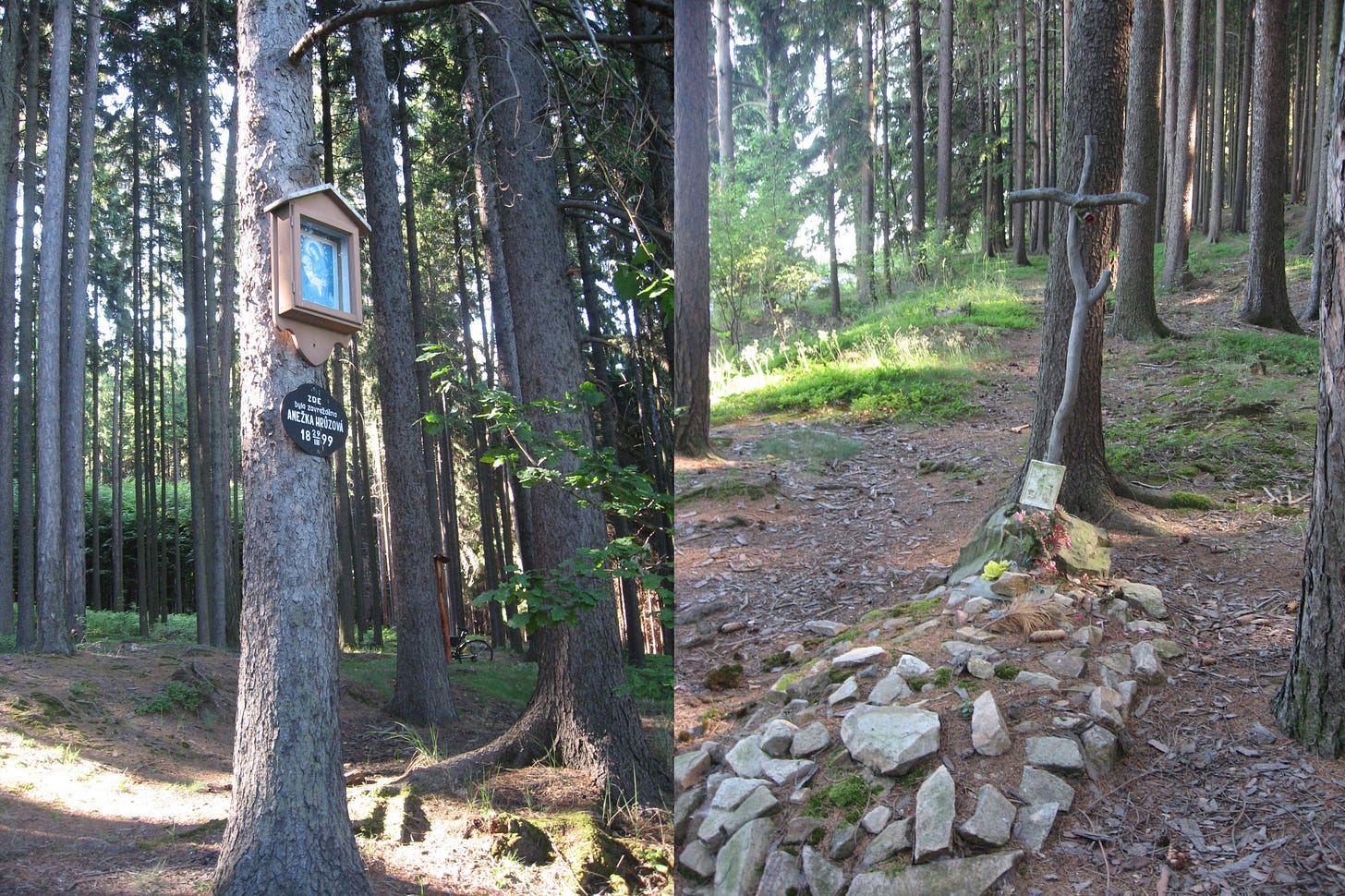
1900 A.D. - On March 11, 19-year-old Ernst Winter, a high school student in Konitz, disappeared after being last seen near a Jewish merchant's house.204 Two days later, searchers found a parcel under the ice in the city basin containing a torso, later identified by Winter's father as his son's remains.205 Additional body parts were later recovered from the lake. Police Commissar Wehn from Berlin arrived two and a half weeks later, convinced that the murderers were not Jews.206 He aggressively questioned witnesses, dismissing any statements implicating Jews. He eventually shifted the focus of the investigation to a gentile butcher, Hoffmann. Ultimately, the charges against Hoffmann were dropped when it was proven that the murder occurred during a time for which Hoffmann had a verifiable alibi.207 As evidence increasingly pointed to the house of the Jewish butcher Adolf Lewy, the judicial investigation was eventually forced to focus on the Lewy family, despite efforts to spare the Jewish community from scrutiny.208
Two physicians from Berlin conducted a post-autopsy examination of Ernst Winter's body parts and confirmed the findings of the Konitz physicians, noting that the body was entirely bloodless. They concluded that Winter was killed in a ritual manner by cutting into the neck and severing major blood vessels. The doctors indicated that the body was dismembered with precision using a knife and saw.209 Additionally, on the day of the murder, a large number of foreign Jews were in Konitz, departing the next day without any plausible reason for their visit. Among them were the butchers Haller from Tuchel, Hamburger from Schlochau, and Steinke from Prechlau.210 This case is known as the “Konitz affair”.
1911 A.D. - On March 20, the body of a young boy was discovered in a clay pit on the outskirts of Kiev near a brick factory. The victim, partially clothed with his hands bound behind his back, was identified as 13-year-old Andrei Yushchinsky.211 A forensic autopsy revealed 47 piercing and cutting wounds across his body and head, with significant blood loss, suggesting death by exsanguination.212 Experts concluded that all wounds were inflicted while the boy was still alive, and the absence of blood at the scene indicated he had been killed elsewhere and his body moved to the pit. Some experts, including Professor Sikorsky, suggested that the murder was carefully planned, with indications of ritualistic elements.213 Suspicion soon fell on Mendel Beilis, Jewish superintendent of the brick factory.214
The trial drew international attention and prompted widespread efforts by Jewish communities to challenge the legitimacy of the charges. One key child witness, Ludmilla Cheberyak, a friend of Andrei Yushchinsky, confirmed that Beilis was the one who abducted him.215 Several key witnesses for the prosecution died under sudden and suspicious circumstances.216 Despite the prosecution's efforts and the presentation of substantial evidence, Beilis was ultimately acquitted, an outcome seen as a significant victory for the Jewish community. Beilis and his family left Russia to settle on land in Palestine, generously provided by Baron Rothschild.217 Beilis died at a hotel in New York in 1934 and was buried at the Mount Carmel Cemetery, which is also the burial place of Leo Frank.218
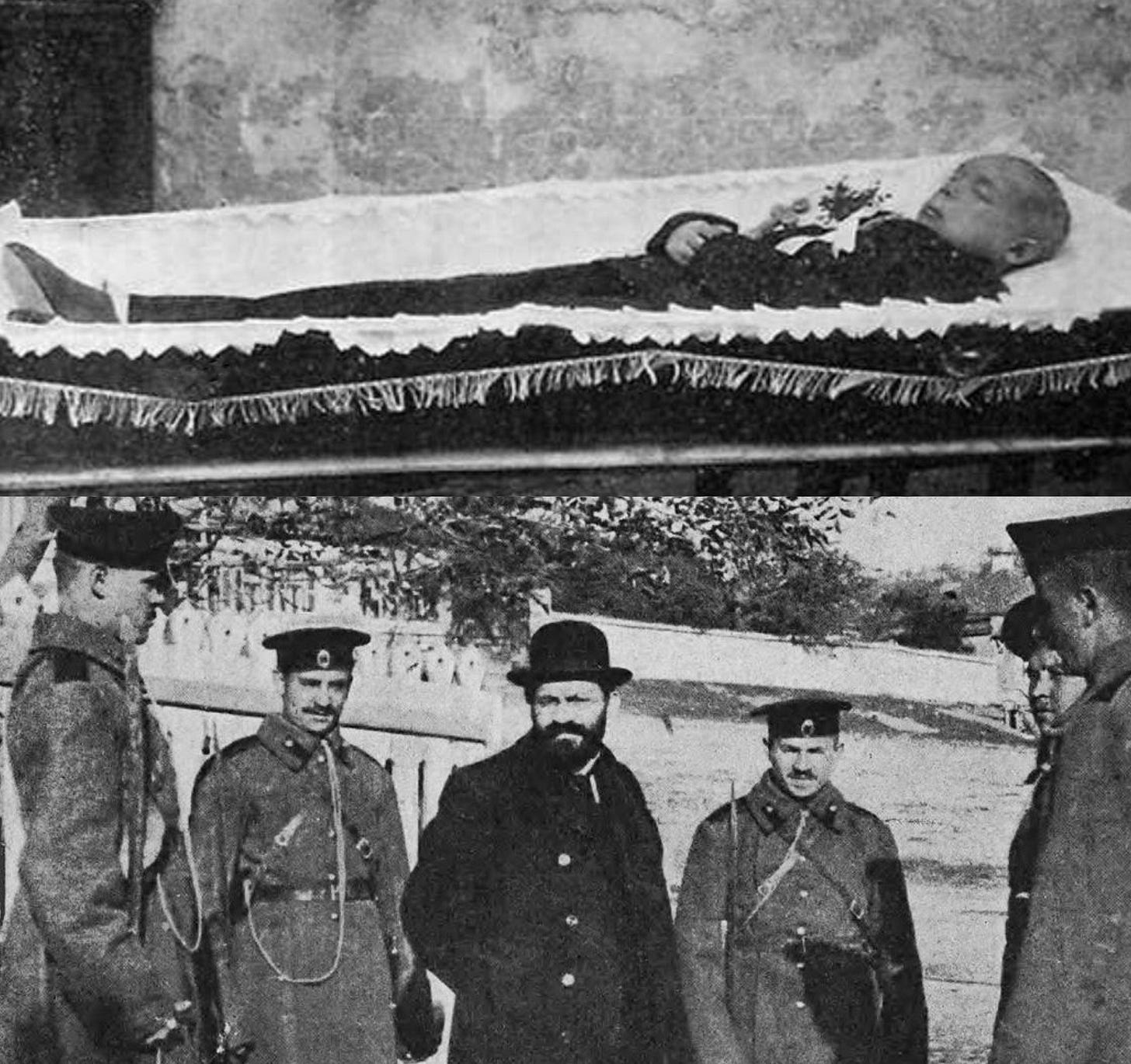
1918 A.D. - Recent statements from the Russian Orthodox Church have suggested that the murder of Tsar Nicholas II and his family was a Jewish Ritual Murder.219 While the evidence regarding the ritualistic nature of the killings remains inconclusive, it is a fact that Jewish individuals were responsible for organizing and carrying out the execution. The operation was organized by Yakov Sverdlov, the Jewish chairman of the All-Russian Central Executive Committee (VTsIK), and Filipp Goloshchyokin, the Jewish Military Commissar of the Ural Regional Soviet.220 The execution itself was supervised by Yakov Yurovsky, the Jewish head of the local Cheka, who personally oversaw the killings and fired the first shots at Tsar Nicholas II.221
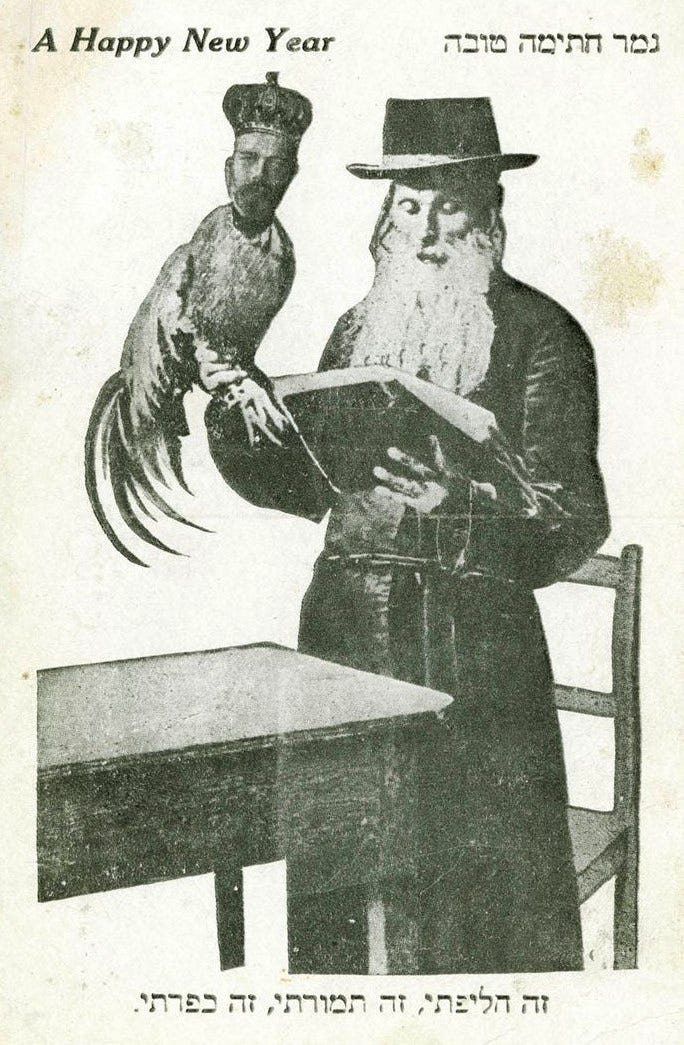
1929 A.D. - The body of the boy Karl Kessler was discovered in a forest near Manau on March 17, just days before Passover. The autopsy revealed that the body had been almost entirely drained of blood, with only a small amount remaining in the left ventricle.222 Rumors of a Jewish ritual murder quickly spread, gaining support among both the local population and some of the investigating officers. It was just before Passover, and the local Jewish butcher had suddenly disappeared. Dr. Burgel, the court doctor, said it was a case of ritual murder. Despite the case remaining unsolved, a memorial plaque was erected at the site, identifying the boy as a victim of ritual murder.223
1935 A.D. - On October 7, the Russian newspaper “Наш путь” (Nasch Put), which translates to “Our Way,” published in Harbin, reported an incident that occurred in Afghanistan. A Muslim child was kidnapped and stabbed to death. The report states that this heinous act was perpetrated by individuals of Jewish descent and that the stabbings were carried out for ritualistic purposes of their religion.224
Conclusion
Since the end of the Second World War, criticism of Jewish communities in the Western world has been forcefully silenced and suppressed. This, of course, includes accusations of ritual murder, which the majority of modern historians dismiss as manifestations of medieval-like prejudice. This suppression may account for the apparent disappearance of such allegations over the past 90 years. In my research, I found no recent instances of Jewish ritual murder, with the possible exceptions of The Unsolved Murder of 5 Chicago Children in 1955 and the St. Philoumenos (Hasapis) of Jacob's Well. However, the current available evidence regarding these two incidents does not conclusively demonstrate a ritualistic element.
The recent discovery of an illegal tunnel beneath a synagogue in New York City has drawn significant attention to this previously forgotten aspect of the Jewish problem. The Anti-Defamation League (ADL) and several newspapers reported that the tunnel's discovery ignited “child trafficking and blood libel conspiracy theories”.225226227 However, the use of the term “conspiracy theories” may be somewhat disingenuous, particularly in light of the numerous cases that have emerged in New York City in recent years.228229230
Lastly, I must emphasize that I have personally witnessed the active suppression of this particular issue. In January 2024, I created an X (twitter) thread discussing the history of Jewish Ritual Murder, which garnered significant attention and was shared by some notable figures on the platform.231 The thread also attracted criticism, including from the chairman of the “fastest-growing Jewish newspaper in America”,232 Dovid Efune, who publicly suggested that Elon Musk should reduce its visibility.233 Shortly after the post reached over 730,000 views, I received a warning from Twitter, instructing me to delete the opening tweet of the thread due to alleged “explicit content” (despite the fact that the painting of Simon of Trent, which I had shared, had been posted on the platform numerous times without issue). In order to regain access to my account, I complied and deleted the tweet, effectively stifling the spread of the entire thread.
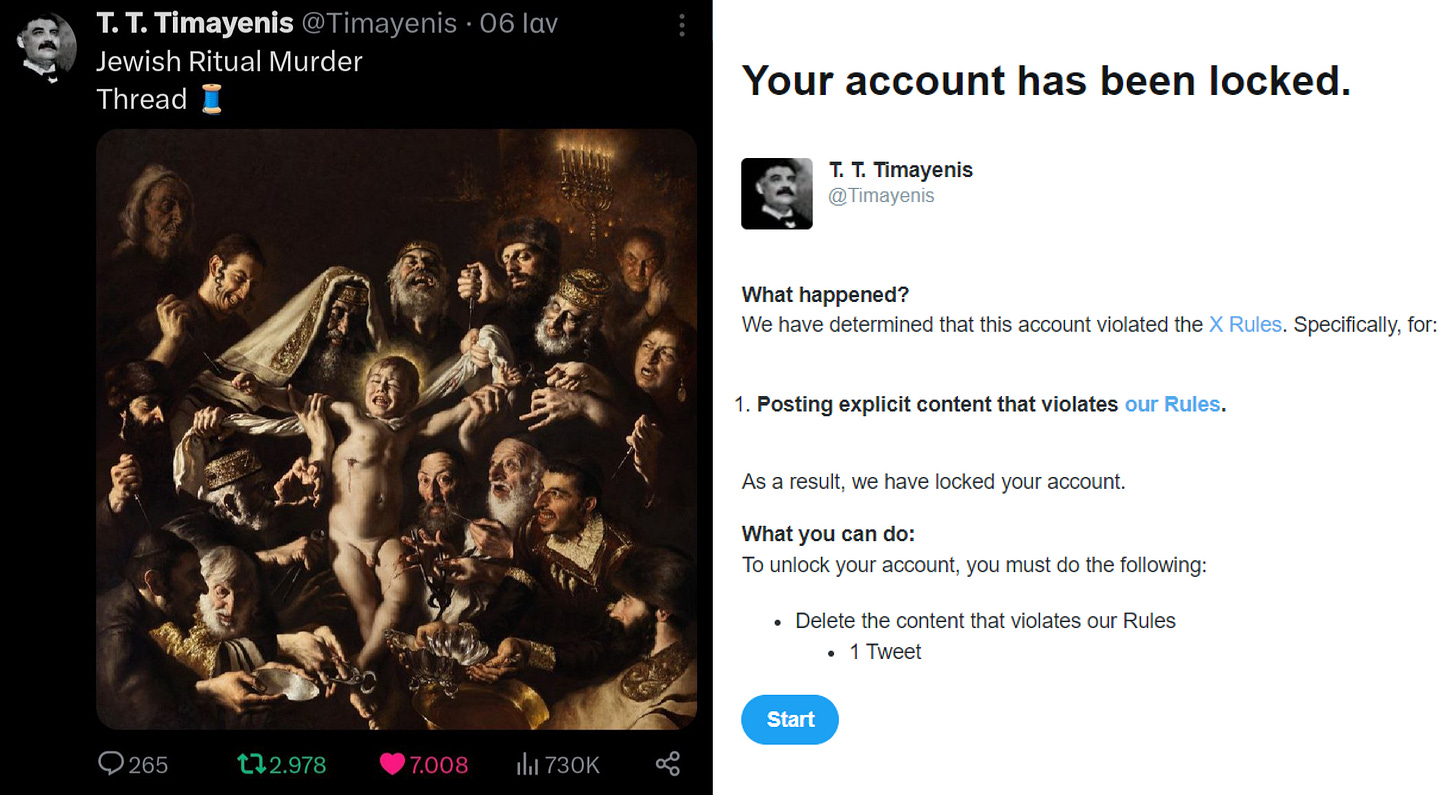
“Greek and Latin Authors on Jews and Judaism, Volume One: From Herodotus to Plutarch” by Menahem Stern p.531
“Judaism and Hellenism Reconsidered” by Louis H. Feldman p.264
“Jew and Gentile in the Ancient World” by Louis H. Feldman p.126
“Against Apion II” by Flavius Josephus
“Tafel der Ritualmorde” [Source: “Der Jüdische Ritualmord: Eine historische Untersuchung” by Hellmut Schramm pp.202-204]
“Die Juden und das Christenblut” (1892) by Erich Bischoff pp.1-45
“Le Mystère du Sang Chez les Juifs de Tous les Temps” by Henri Desportes p.62
“Le Pèlerin du 20e siècle - Année 1892” by Maison de la Bonne Presse p.398, Nᵒ.811
“The Jew in the Medieval World a Sourcebook: 315-1791” by Jacob Rader Marcus p.25
“William of Norwich” (Jewish Historical Society of England) by Raphael Langham
“Toward a Definition of Antisemitism” by Gavin I. Langmuir p.283
“The Life and Miracles of St. William of Norwich” (1896) Translated by Augustus Jessopp and M.R. James p.21
“Saints and Their Communities: Miracle Stories in Twelfth-Century England” by Simon Yarrow p.131
“Jewish Dogs: An Image and Its Interpreters: Continuity in the Catholic-Jewish Encounter” by Kenneth Stow p.85
“The ritual-child-murder accusation: its dissemination and Harold of Gloucester” by Joe Hillaby pp.69-109
“Historia et cartularium Monasterii Sancti Petri Gloucestriae” (1863) by William Henry Hart p.20
“L'Intermédiaire des chercheurs et curieux” (1882) p.759
“Die Juden und das Christenblut” (1892) by Erich Bischoff p.2
“Richard of Pontoise and Philip Augustus” by Kenneth Stow
“Croxton Play of the Sacrament” by John T Sebastian p.13
“The Jew in the Medieval Book: English Antisemitisms 1350-1500” by Anthony Bale pp.105-127
“Acta Sanctorum, Aprilis, Tomus II” p.505
“Le Mystère du Sang Chez les Juifs de Tous les Temps” by Henri Desportes p.65
“Historia Bavariae Vol.II” by Johann Georg Meichelbeck p.94
“Regesten zur Geschichte der Juden im fränkischen und deutschen Reich bis zum Jahre 1273” by Julius Aronius p.208
“Regesten zur Geschichte der Juden im fränkischen und deutschen Reich bis zum Jahre 1273” by Julius Aronius p.217
“Toward a Definition of Antisemitism” by Gavin I. Langmuir p.276
“A History of the Jewish People” by Abraham Malamat p.482
“Der Jüdische Ritualmord: Eine historische Untersuchung” by Hellmut Schramm p.180
“The Jewish Encyclopedia, 1903, Vol. III” p.261
“Schediasma historico philologicum de Judaeorum Pseudomessiis” by Johann von Lent p.33
“Der Talmud in Der Theorie Und in Der Praxis” (1866) by Konstantin R Pawlikowski p.248
“Le Mystère du Sang Chez les Juifs de Tous les Temps” by Henri Desportes p.68
“The Spanish Catholic Liturgical Calendar 2016–2017” p.286
“Matthew Paris's English history: from the year 1235 to 1273” (1852) p.138
“Acta Sanctorum, Julii, Tomus VI” p.494
“The Knight's Tale of Yung Hugh of Lincoln” (Speculum: Vol.47, Nr.3, 1972) by Gavin I. Langmuir
“What makes a saint? A Lincoln case study in the communion of the local and the universal Church” (International Journal for the Study of the Christian Church, Volume 17, Issue 3) by Nicholas Sagovsky
“Medieval Art and Architecture at Lincoln Cathedral” by British Archaeological Association (David Stocker) pp.109-117
“The English and Scottish Ballads Vol. III Part I” by Francis James Child pp.233-234
“Antisemitism Explained” by Steven K. Baum p.65
“Regesten zur Geschichte der Juden im fränkischen und deutschen Reich bis zum Jahre 1273” by Julius Aronius p.306
“Histoire Universelle de l'Église Catholique Vol. XVIII” by René François Rohrbacher pp.697-700
“Zeitschrift für die Geschichte des Oberrheins, Volume IX” by Franz Josef Mone p.271, Nr.17
“Geschichte der Juden, Volume II (1870)” by Heinrich Grätz p.368
“Acta Sanctorum, Aprilis, Tomus II” by Daniel Papebroch p.697
“Der Jüdische Ritualmord: Eine historische Untersuchung” by Hellmut Schramm p.18
“Chronik von Kolmar, vol.II, (1867)” edited by Pabst, Berlin p.158
“Das antijüdische Ritualmordrelief von 1727 an der Wernerkapelle von Oberwesel und seine widerwillige Entfernung 1970” by Walter Karbach
“Acta Sanctorum, Aprilis, Tomus II” p.504
“Helvetia sancta” by Heinrich Murer p.299
“Monatliche Unterredungen” (1693) by Wilhelm Ernst Tentzel p.556
“Der "Gute Conrad" von Weissensee: Judenmord und Heiligenverehrung zwischen Spätmittelalter und Reformation” by Lukas Verlag p.36
“Tisza-Eszlár in der Vergangenheit und Gegenwart” by Géza von Ónody p.81
“Der Jüdische Ritualmord: Eine historische Untersuchung” by Hellmut Schramm p.19
“Überlinger Sagen und Bräuche vom Bodensee” by Theodor Lachmann p.249
“Die Chronik des Minderbruders Johannes von Winthertur III” (1861) by Johannes Vitoduranus pp.145-147
“Superstition and Force: Essays on the Wager of Law - the Wager of Battle - the Ordeal - the Torture” by Henry Charles Lea p.317
“Le Mystère du Sang Chez les Juifs de Tous les Temps” by Henri Desportes pp.72-73
“Historia Frisingensis, Tomus II” by Johann Georg Meichelbeck p.94
“Bavaria Sancta, Vol.II” by Matthäus Rader p.333
“Ordonnances des rois de France de la troisième race vol.VII” p.675
“Weltkampf” (1941) by Johann von Leers p.100
“The Lives of the Saints” (1880) by Sabine Baring-Gould pp.381-382
“Acta Sanctorum, Aprilis, Tomus III” p.978
“A Convert’s Tale: Art, Crime, and Jewish Apostasy in Renaissance Italy” by Tamar Herzig p.39
“Eine mittelalterliche Ritualmordlegende aus Lienz” by Von Meinrad Pizzinini
“Katholischen Blätter aus Tirol” by George Tinkhauser, Nr.10 [Source: “Der Jüdische Ritualmord: Eine historische Untersuchung” by Hellmut Schramm p.20]
“Vier Tiroler Kinder, Opfer des chassidischen Fanatismus, 1893” by Dr. Joseph Deckert p.80
“Ehrenglanze der gefürsteten Grafschaft Tirol, Vol.II” (1843) by Jacob Schmid p.141
“Vier Tiroler Kinder, Opfer des chassidischen Fanatismus, 1893” by Dr. Joseph Deckert p.74
“Das Blut in Glauben und Aberglauben der Menscheit” by Dr. Hermann Strack p.144
“Memorie storico-cronologiche di varj bambini ed altri fanciulli martirizzati, in odio di nostra fede, da gli ebrei” (1761) by Giovanni Pietro Vitti pp.150-151
“Der Jüdische Ritualmord: Eine historische Untersuchung” by Hellmut Schramm p.40
“Le Mystère du Sang Chez les Juifs de Tous les Temps” by Henri Desportes p.75
“Popular History of the Jews, Volume 4” (1949) by Heinrich Graetz p.156
“Jüdische Moral und Blut-mysterium” by Athanasius Fern p.13
“Vier Tiroler Kinder, Opfer des chassidischen Fanatismus, 1893” by Dr. Joseph Deckert pp.87-119
“Beschreibung der Marter des heiligen Andreas von Rinn” by Ignatius Zach
“Acta Sanctorum, Volume II, July” p.462
“The Cultural Heritage of Medieval Rituals: Genre and Ritual” by Eyolf Østrem p.156
“The Butcher's Tale: Murder and Anti-Semitism in a German Town” by Helmut Walser Smith p.107
“A History of the Jewish People” (1927) by Max Leopold Margolis & Alexander Marx p.461
“Die Juden und das Christenblut” by Erich Bischoff pp.10-11
“Colmenares in Historia de la insigne ciudad de Segovia and Synopsis episcoporum Segoviensium” by Diego de Colmenares p.650
“Martyrdom, Murder, and Magic: Child Saints and Their Cults in Medieval Europe” by Patricia Healy Wasyliw p.132
“Trent 1475: Stories of a Ritual Murder Trial” (1992) by R. Po-chia Hsia, Bojia Xia p.18
“Problems in the Historical Anthropology of Early Modern Europe” (1997) by R. Po-chia Hsia & Robert W. Scribner p.36
“Anti-Semitism: Myth and Hate from Antiquity to the Present” by Marvin Perry & F. Schweitzer p.53
“A Murder, a Mummy, and a Bust: The Newly Discovered Portrait of Simon of Trent at the Getty” (2018) by Jeanette Kohl
“The Popes Against the Jews: The Vatican's Role in the Rise of Modern Anti-Semitism” by David I. Kertzer p.156
“Der Jüdische Ritualmord: Eine historische Untersuchung” by Hellmut Schramm p.26
“Le Mystère du Sang Chez les Juifs de Tous les Temps” by Henri Desportes p.80
“The Viewer and the Printed Image in Late Medieval Europe” by David S. Areford p.195
“Gli Ebrei a Bassano: Monografia Documentata” (1907) by Giovanni Chiuppani p.73
“Revue des études juives, Volume 19” (1889) by Société des Études Juives p.203
“Sebastiano Novello” by Benedetto Cignittiin [Bibliotheca Sanctorum, Vol.XI] (1968) col.1318
“Portobuffolè” (1984) by Salomone G. Radzik p.76
“Sebastiano Novello” by Benedetto Cignittiin [Bibliotheca Sanctorum, Vol.XI] (1968) col.1319
“The Blessed Lorenzino of Marostica presumed victim of a ritual murder” by Gemma Volli [Source: “La Rassegna Mensile di Israel, Vol.34, n.9” (1968) pp.513-526]
“Bavaria Sancta, Vol.III” by Matthäus Rader p.172
“Die Kirche und die Synagoge” by Louis Rupert & Sebastian Brunner p.220
“Entdecktes Judenthum, Vol.II” by Johann Andreas Eisenmenger p.222
“Le Mystère du Sang Chez les Juifs de Tous les Temps” by Henri Desportes p.79
“Dogs of Gods: Columbus, the Inquisition, and the defeat of the Moors” by James Reston p.207
“Reformation: Europe's House Divided 1490–1700” by Diarmaid MacCulloch
“Rerum Hungaricarum decades, Volume 4” (1771) by Antonio Bonfini p.728 [Source: “The Jew and Human Sacrifice: Human Blood and Jewish Ritual, an Historical and Sociological Inquiry” by Hermann Leberecht Strack pp.201-202]
“Acta Sanctorum, Volume II, April” p.505
“The LIST: Persecution of Jews by Christians Throughout History” by Ray Montgomery & Bob O'Dell p.231
“Die Juden in Berlin” by Richard Mun p.31
“Revealing the Secrets of the Jews: Johannes Pfefferkorn and Christian Writings about Jewish Life and Literature in Early Modern Europe” by Jonathan Adams & Cordelia Heß p.35
“Der Jüdische Ritualmord: Eine historische Untersuchung” by Hellmut Schramm p.27
“Täglicher Schauplatz der Zeit” by Heinrich Anselm von Ziegler und Kliphausen p.556
“Violence and Emotions in Early Modern Europe” by Susan Broomhall & Sarah Finn pp.44-45
“The Historical Writings of Joseph of Rosheim: Leader of Jewry in Early Modern Germany” by Chava Fraenkel Goldschmidt p.245
“Bavaria Sancta Vol.III” by Matthäus Rader p.176
“The Historical Writings of Joseph of Rosheim: Leader of Jewry in Early Modern Germany” by Chava Fraenkel Goldschmidt p.246
“The Butcher's Tale: Murder and Anti-Semitism in a German Town” by Helmut Walser Smith p.110
“Acta pro veritate martyrii corporis, et cultus publici B. Andreae Rinnensis Pueruli” by Adrianus Kembter & Josephus Lizi & Johannes Lohelius Thallgueter p.121
“Acta Sanctorum, Volume II, April” p.839
“Der Jüdische Ritualmord: Eine historische Untersuchung” by Hellmut Schramm p.29
“Monatliche Unterredungen” (1693) by Wilhelm Ernst Tentzel, p.557
“Das schwer zu bekehrende Juden-herz” by Sigismund Hossman pp.120-121
“Die St. Annenkirche und die Klosterkirchen von St. Bernhardin und St. Michael in Wilna” by Walter Jäger p.34
“Wilno od początkow jego do roku 1750, Vol.2” by Józef Ignacy Kraszewski p.320
“Blood Libel: On the Trail of an Antisemitic Myth” by Magda Teter p.149
“Święte miejsca i cudowne ikony” (Prawosławne sanktuaria na Białostocczyźnie) by Grzegorz Sosna pp.141-143
“Żytije i muczeniczestwo mładienca Gawriiła” [The Life and Martyrdom of the Child Gabriel] by Joann Wostorgow
“Prawosławne uroczystości ku czci Męczennika Gabriela w Zwierkach” by Anna Petrovska [Polskie Radio Białystok - Retrieved 3 May 2021]
“Revue critique d'histoire et de littérature, Tome XLV” (1898) p.230
“Der Talmud in Der Theorie Und in Der Praxis” (1866) by Konstantin R Pawlikowski p.266
“Women on the Margins: Three Seventeenth-century Lives” by Natalie Zemon Davis p.17
“Renovatum den 23. Juli 18 1855” [Source:“Der Jüdische Ritualmord: Eine historische Untersuchung” by Hellmut Schramm p.32]
“Vier Tiroler Kinder, Opfer des chassidischen Fanatismus, 1893” by Dr. Joseph Deckert pp.120-130
“Kirchenzeitung der Diözese Bozen-Brixen, No.36” (7 September 2014) p.19
“Anti-Semitism: Myth and Hate from Antiquity to the Present” by Marvin Perry, F. Schweitzer, M. Perry p.57
“Der Jüdische Ritualmord: Eine historische Untersuchung” by Hellmut Schramm p.31
“History of the Jews in Russia and Poland, Vol.1-2” (1975) by Simon Dubnow p.177
“Blood Libel: On the Trail of an Antisemitic Myth” by Magda Teter p.277
“Die Juden und das Christenblut” by Erich Bischoff p.18
“Der Jüdische Ritualmord: Eine historische Untersuchung” by Hellmut Schramm p.32
“Ritual Murder: Legend in European History” by Susanna Buttaroni & Stanisław Musiał p.221
“Tisza-Eszlár in der Vergangenheit und Gegenwart” by Géza von Ónody p.113
“Gerichts-Akt in den Archiv von Zilah” [Source: “Der Jüdische Ritualmord: Eine historische Untersuchung” by Hellmut Schramm p.30]
“Das Judenthum und die Kritik : oder es bleibt bei den Menschenopfern der Hebräer und bei der Nothwendigkeit einer zeitgemäßen Reform des Judenthums” (1844) by Friedrich Wilhelm Ghillany p.142
“Ahasveros” (1840) by Christian G. Bender p.133
“Was glauben die Juden?” (1823) by Friedrich Örtel p.138
“Der Jüdische Ritualmord: Eine historische Untersuchung” by Hellmut Schramm p.33
“The Velizh Affair: Blood Libel in a Russian Town” by Eugene M. Avrutin pp.16-23
“Der Talmud in Der Theorie Und in Der Praxis” (1866) by Konstantin R Pawlikowski p.280
“Der Jüdische Ritualmord: Eine historische Untersuchung” by Hellmut Schramm p.34
“Les Questions actuelles: revue documentaire, Vol.15” p.141
“Le Mystère du Sang Chez les Juifs de Tous les Temps” by Henri Desportes p.89
“Affaires de Syrie, tome II” by Achille Laurent p.320
“Le juif: le judaïsme et la judaïsation des peuples chrétiens” by Roger Gougenot Des Mousseaux pp.233-234
“Le Mystère du Sang Chez les Juifs de Tous les Temps” by Henri Desportes p.42
“The Stranger in Early Modern and Modern Jewish Tradition” by Catherine Bartlett and Joachim Schlör p.243
“The Damascus Affair: Ritual Murder, Politics, and the Jews in 1840” by Jonathan Frankel p.23
“The Blood Libel Legend A Casebook in Anti-Semitic Folklore” (1991) by Alan Dundes pp.114-115
“Ratti - Menton to Soult (24 march, no.19) MRE:TAD p.29” [Source: “The Damascus Affair: Ritual Murder, Politics, and the Jews in 1840” by Jonathan Frankel p.27]
“The Blood Libel Legend A Casebook in Anti-Semitic Folklore” (1991) by Alan Dundes p.83
“Blood Libel: The Damascus Affair of 1840” by Ronald Florence p.88
“Matzo of Zion” by General Mustafa Tlass p.82
“Jewish–Christian Relations in Aleppo as Background for the Jewish Response to the Events of October 1850” (International Journal of Middle East Studies 30, no.1) by Yaron Harel
“Damaskus 1840” [Source: “Der Jüdische Ritualmord: Eine historische Untersuchung” by Hellmut Schramm pp.47-57]
“The Damascus Affair: Ritual Murder, Politics, and the Jews in 1840” by Jonathan Frankel p.72
“Relation historique des affaires de Syrie, tome II” by Achille Laurent pp.343 & 361
“Der Ritualmord : Beitrage zur Untersuchung” (1933) by Ottokar Stauf von der March p.216
“Der Ritualmord : Beitrage zur Untersuchung” (1933) by Ottokar Stauf von der March p.101
“The Russian Soul and the Jew: Essays in Literary Ethnocriticism” by Felix Dreizin p.70
“L’Univers - April 5, 1879” (newspaper)
“A New Word on The Brothers Karamazov” by Robert Louis Jackson p.219
“Aceldama, ossia Processo celebre istruito contro gli ebrei di Damasco nell'anno 1840” p.278
“Der Jüdische Ritualmord: Eine historische Untersuchung” by Hellmut Schramm p.61
“Histories of the Jews of Egypt: An Imagined Bourgeoisie, 1880s-1950s” by Dario Miccoli p.55
“Der Jüdische Ritualmord: Eine historische Untersuchung” by Hellmut Schramm p.73
“The Dublin Journal of Medical Science, Vol. LXXVI” (July to December, 1883) p.362
“Comrade Huppert: A Poet in Stalin's World” by George Huppert p.38
“The Jewish Problem And Its Solution” by Arnold Frank p.51
“Tisza-Eszlár 1882” [Source: “Der Jüdische Ritualmord: Eine historische Untersuchung” by Hellmut Schramm pp.88-90]
“Der Blutprozess von Tisza Eszlár in Ungarn” (1883)
“Memory against Culture Arguments and Reminders” by Johannes Fabian p.108
“The History and Romance of Crime From the Earliest Time to the Present Day” by Arthur George Frederick Griffiths p.241
“Xanthen 1891” [Source: “Der Jüdische Ritualmord: Eine historische Untersuchung” by Hellmut Schramm pp.110-125]
“Il Risveglio di Cagliari, Novembre n.41” [Source: “Aceldama, ossia Processo celebre istruito contro gli ebrei di Damasco nell'anno 1840” p.290]
“Antisemitic Rumours and Violence in Corfu at the End of 19th Century” by Maria Margaroni
“Neue Preußische Zeitung, Nr.245” (Berlin, 30 May 1891)
“Der Hausschatz: Belletristisches Beiblatt zum Fränkischen Volksblatt, Volume 24” pp.266-268
“Illustrirte Wiener Volks-Zeitung” (7 June 1891)
“Korfu 1891” [Source: “Der Jüdische Ritualmord: Eine historische Untersuchung” by Hellmut Schramm pp.100-109]
“Die Juden und das Christenblut” by Erich Bischoff pp.43-44
“Stenographische Protokolle des Hauses der Abgeordneten des Reichsrathes” (1901) by the Österreich Reichsrat Abgeordnetenhaus p.4
“Der Ritualmord bei den Talmud-Juden” by Carl Mommert p.106
“Jews on Trial” by Bruce Afran p.62
“Historia Judaica” (1947) by Guido Kisch p.57
“Polna 1898/99: Agnes Hruza” [Source: “Der Jüdische Ritualmord: Eine historische Untersuchung” by Hellmut Schramm p.127]
“Prague Winter: A Personal Story of Remembrance and War, 1937-1948” by Madeleine Albright p.60
“Brief des tschechischen Redakteurs Jaromir Husek an Abgeordneten Schneider in Wien” (Letter from Czech editor Jaromir Husek to deputy Schneider in Vienna) [Source: “Der Jüdische Ritualmord: Eine historische Untersuchung” by Hellmut Schramm p.128]
“Der Polnaer Ritualmordprozess: Eine Kriminalpsychologische Untersuchung auf Aktenmässiger Grundlage” by Arthur Nußbaum p.37
“Kam značky nevedou III. a další podivuhodné cesty” by Ivana Mudrová pp.147-155
“Biografický slovník Polenska” by Jan Prchal pp.45-46
“Konitz 1900” [Source: “Der Jüdische Ritualmord: Eine historische Untersuchung” by Hellmut Schramm p.137]
“Exclusionary Violence: Antisemitic Riots in Modern German History” by Christhard Hoffmann, Werner Bergmann, Helmut Walser Smith p.93
“Sensationalizing the Jewish Question: Anti-Semitic Trials and the Press in the Early German Empire” by Barnet P. Hartson p.278
“The Butcher's Tale: Murder and Anti-Semitism in a German Town” by Helmut Walser Smith p.62
“Konitz 1900: Der Gerichtshof” [Source: “Der Jüdische Ritualmord: Eine historische Untersuchung” by Hellmut Schramm p.145]
“Blood Inscriptions: Science, Modernity, and Ritual Murder at Europe's Fin de Siècle” by Hillel J. Kieval pp.134 & 199
“The Butcher's Tale: Murder and Anti-Semitism in a German Town” by Helmut Walser Smith p.82
“The Jew Accused: Three Anti-Semitic Affairs (Dreyfus, Beilis, Frank) 1894-1915” by Albert S. Lindemann p.184
“The Murder of Andrei Yushchinsky: A Study in Three Parts” [JRBooksOnline edition] by Georgy Zamyslovsky p.234
“Jews on Trial” by Bruce Afran p.81
The Beilis Transcripts: The Anti-semitic Trial that Shook the World” by Ezekiel Leikin p.7
“The Beilis Transcripts: The Anti-semitic Trial that Shook the World” by Ezekiel Leikin p.44
“Kiev 1911: Die Mörder” [Source: “Der Jüdische Ritualmord: Eine historische Untersuchung” by Hellmut Schramm pp.156-159]
“Mendel Beilis Goes To Palestine, January 16, 1914” [Newspaper: Omaha Daily Bee]
“Redemption On East Tremont” (The Jewish Week) by Jonathan Mark
“Russian Orthodox Church suggests tsar's death was a Jewish ritual murder” (The Telegraph, 28 November 2017)
“The Jewish Century” (2011) by Yuri Lvovich Slezkine p.178
“The Last Days of the Romanovs: Tragedy at Ekaterinburg” by Helen Rappaport p.192
“Der Stürmer: Jüdischer Mordplan gegen die nichtjüdische Menschheit aufgedeckt” (May 17, 1934)
“Die Juden sind unser Unglück: Antisemitische Verschwörungstheorien und ihre Verankerung in Politik und Gesellschaft” by Jasmin Waibl-Stockner p.246
“My Irrelevant Defence” by Arnold Leese p.51
Tweet from famous mixed martial artist - Jake Shields (750k+ followers)




